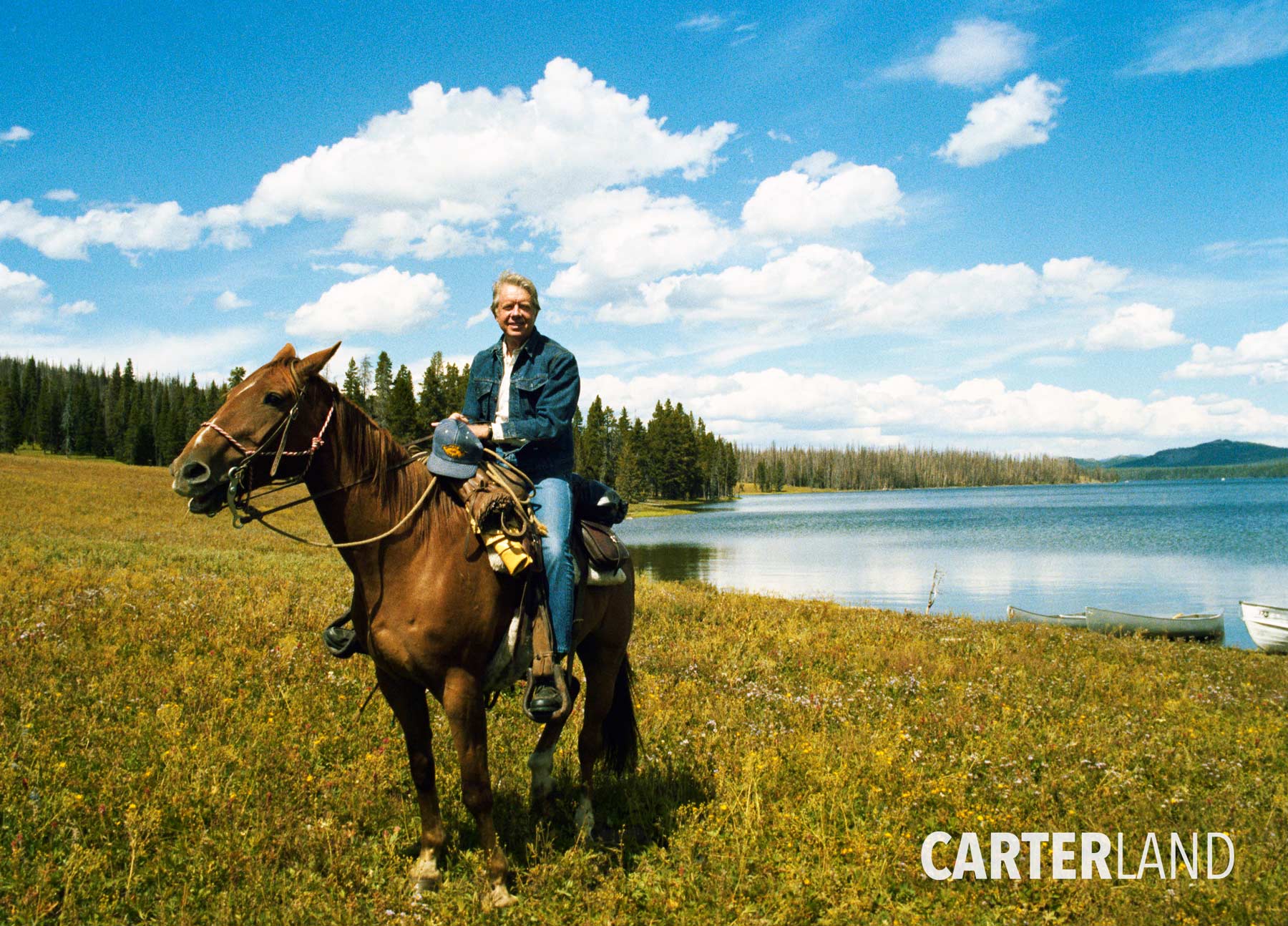
Sea levels are rising and oceans are becoming warmer. Longer, more intense droughts threaten crops, wildlife and freshwater supplies. From polar bears in the Arctic to marine turtles off the coast of Africa, our planet’s diversity of life is at risk from the changing climate.
Extraordinary heat waves are sending temperatures soaring into uncharted territory in Europe and the United States setting ghastly new benchmarks.
As we enter dangerous uncharted territory, More Just Parks takes a look back at the man whom we consider to be the Greatest Conservation President and the lessons that he has to offer us today.
Future generations of conservation leaders must remember that we are stewards of a precious gift, which is not an unpleasant duty, but rather an exciting challenge. We must safeguard our land so that our children and grandchildren can enjoy freshwater, clean air, scenic mountains and coasts, fertile agricultural lands, and healthy, safe places to live and thrive.” – Jimmy Carter
Greater Than Theodore Roosevelt?
Now before all of you Roosevelt enthusiasts hang us by the nearest lamp post, hear us out.
We will make our case. All we ask of you is that you reserve judgement until all of the facts are put in front of you.
To make the case for Jimmy Carter as our nation’s “Greatest Conservation President,” there are three criteria which we will outline and explore.
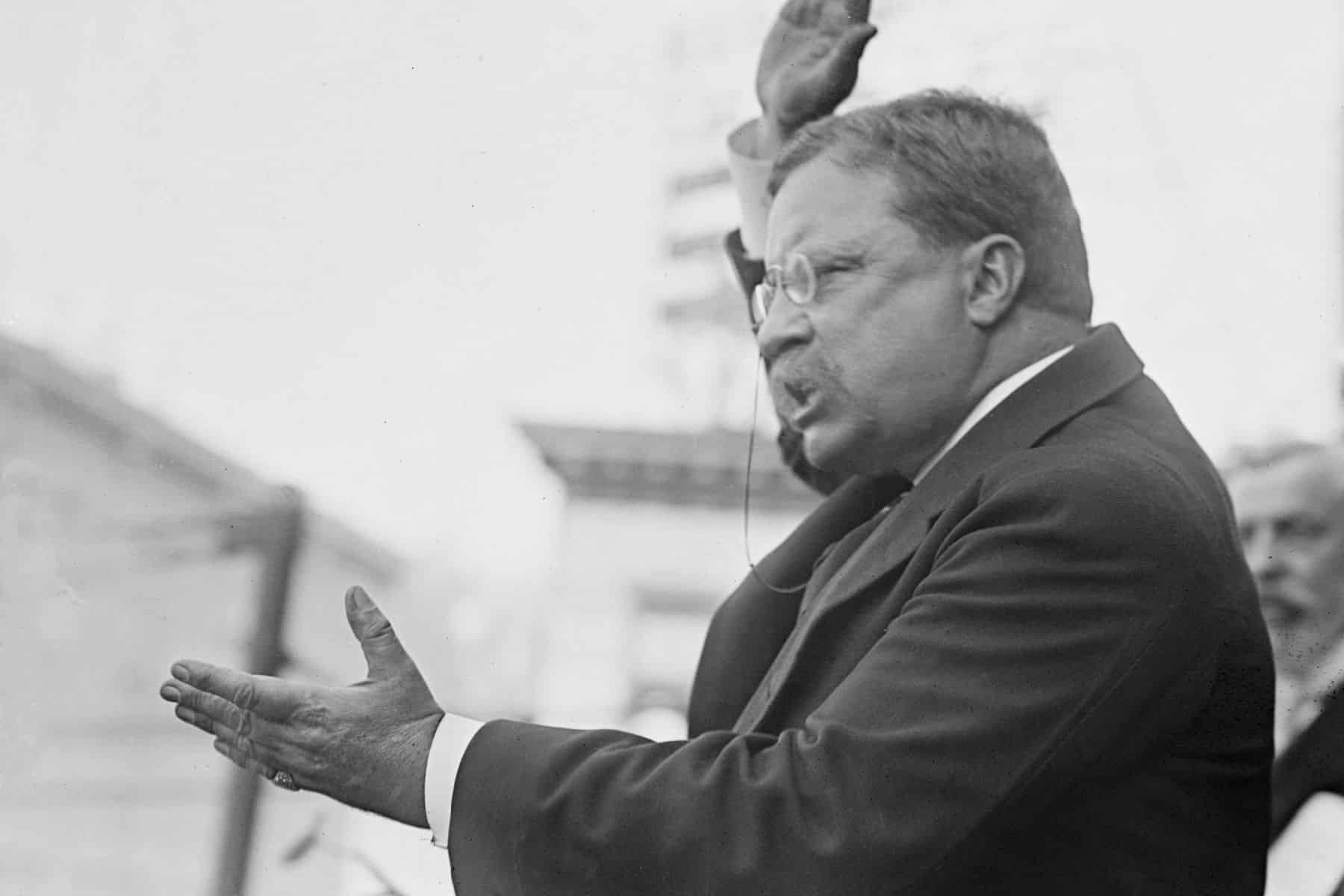
Determining Who Was Greatest Conservation President
The first criteria is quantitative. During Carter’s presidency, America’s most trusted newsman was legendary CBS News Anchor, Walter Cronkite.
After Carter invoked his authority under the Antiquities Act to protect vast swaths of Alaskan wilderness in one fell swoop, Cronkite put it this way:
“President Carter today more than doubled the size of the National Park System by invoking his executive authority to protect 56 millions acres of Alaskan Wilderness.“
“Environmental groups said Carter has now replaced Teddy Roosevelt as the greatest conservation president of all time.“
That’s quite a claim, but let’s keep going.
Alaska National Interest Lands Conservation Act
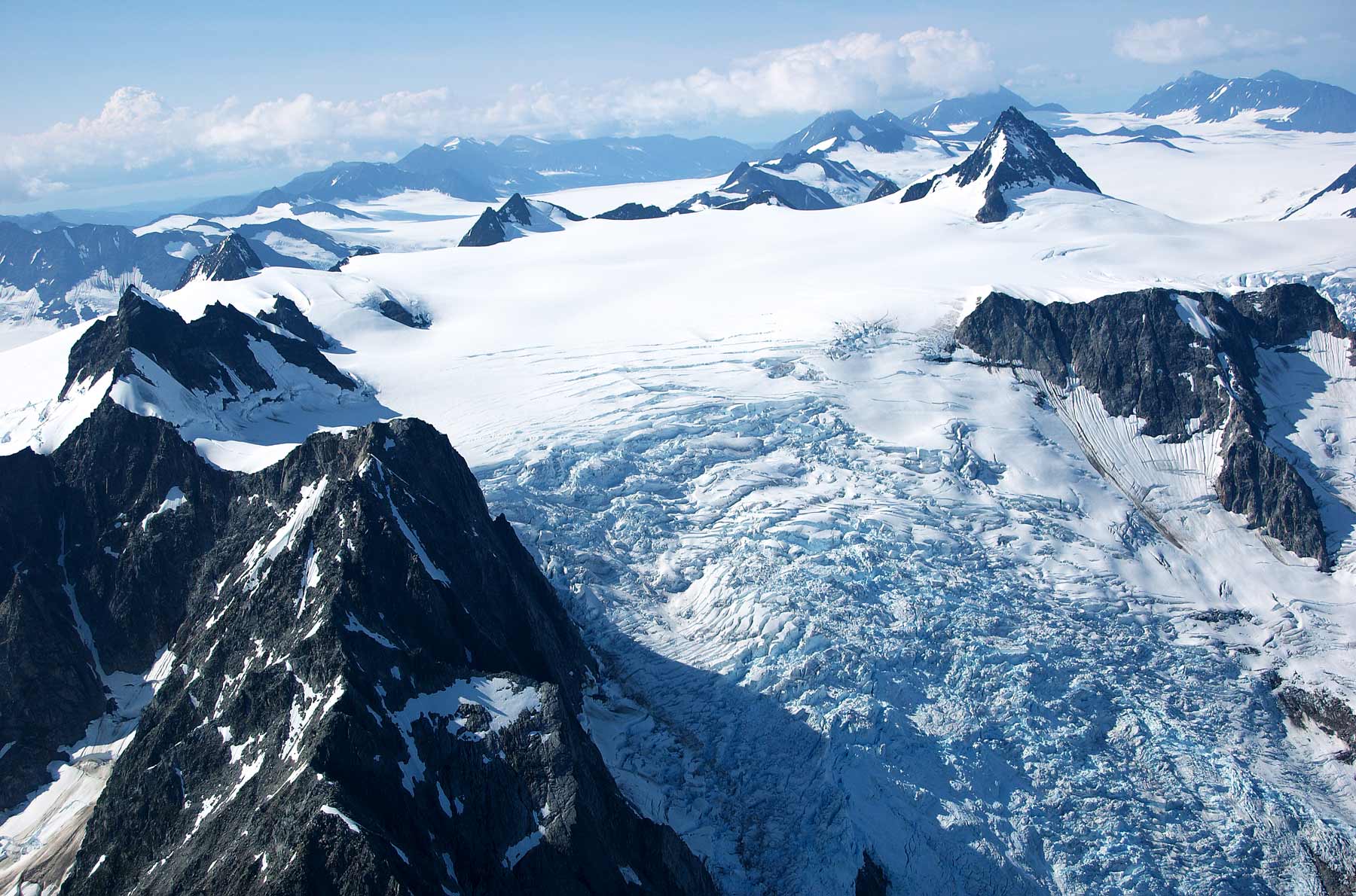
One of President Carter’s proudest achievements was the Alaska National Interest Lands Conservation Act.
The Alaska National Interest Lands Conservation Act (ANILCA) protected millions of acres of wilderness in Alaska, and established new national parks, wildlife refuges, and wilderness areas.
ANILCA was passed after years of debate and negotiation between conservationists, native Alaskans, and the federal government.
The act protected over 104 million acres of public land in Alaska, including over 57 million acres designated as wilderness, which is the highest level of federal land protection. It was the single greatest protection of public lands in our nation’s history.
The act also established or expanded 10 national parks and preserves, including Denali National Park and Preserve, Katmai National Park and Preserve, and Wrangell-St. Elias National Park and Preserve.
In addition, the law provided for the protection of native Alaskan cultures and established a system of conservation units to protect the habitats of fish and wildlife.
ANILCA was a landmark piece of legislation in the conservation movement, which would not have been possible without the leadership exhibited by President Carter. It helped to preserve some of the most pristine and ecologically important areas in the United States.
“We are setting aside for conservation an area of land larger than the state of California,” Carter proclaimed at the signing ceremony.
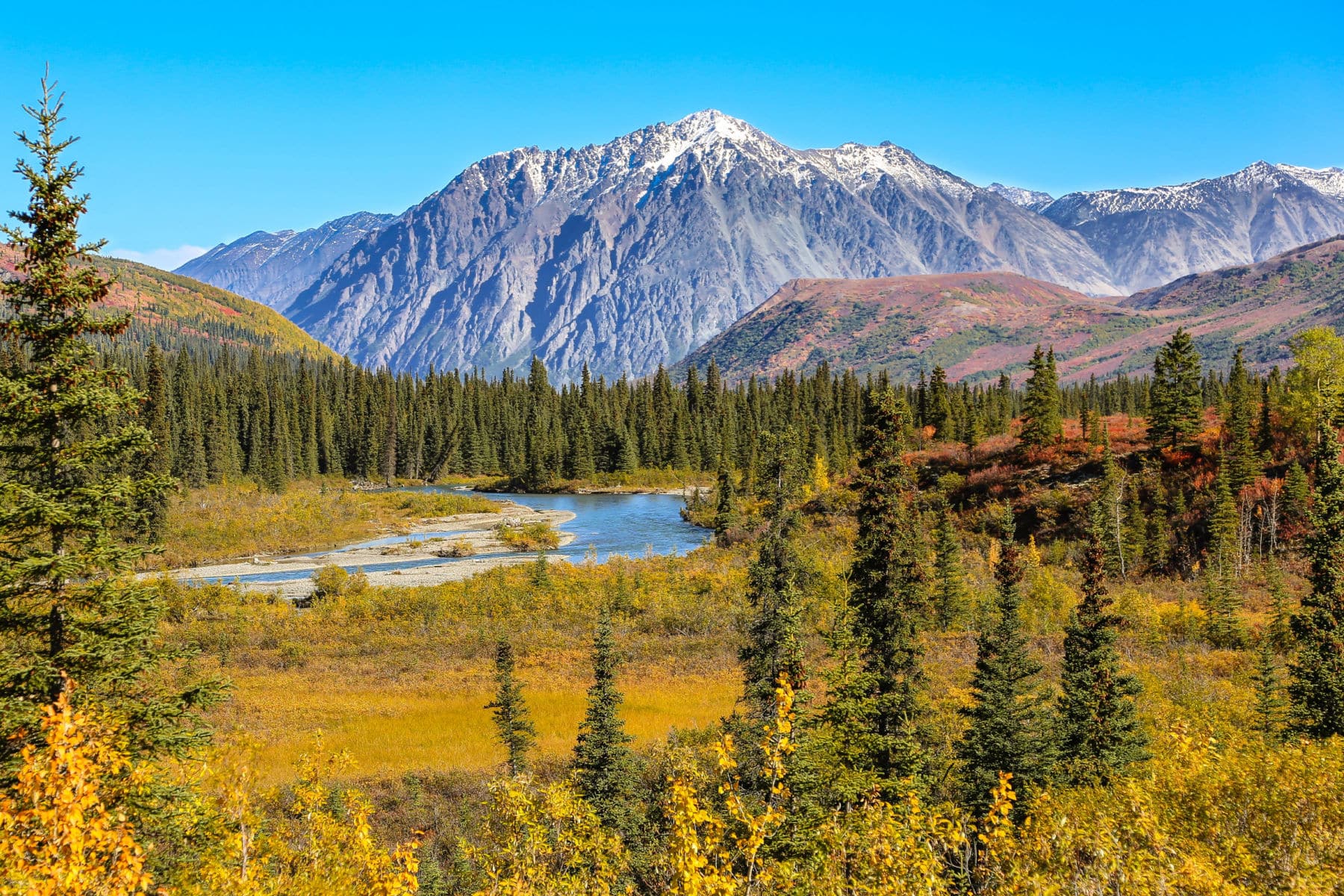
One Of The Most Effective & Greatest Champions
Will Shafroth is President of the National Park Foundation.
In assessing President Carter’s conservation legacy, he concludes, “President Carter will go down in history as one of the most effective and greatest champions of national parks of any U.S. President.”
“He created thirty-nine national park units. These are places as diverse as Theodore Roosevelt National Park in North Dakota, the Martin Luther King National Historic Park in Atlanta, Denali National Park, in a series of National Park units in Alaska.”
Shafroth said “one of the most effective and greatest champions.” He didn’t say the greatest. Patience please. We’re not finished yet.

What About Teddy?
Jonathan Jarvis served as the 18th Director of the National Park System under President Obama. He appeared in the documentary CARTERLAND.
Jarvis called the Alaska Lands Act, “The most significant thing that he [Carter] did and, frankly, that almost any U.S. President did at any time.”
Jarvis described Carter’s conservation leadership as “unsurpassed in the history of conservation.” As he notes, Carter protected over 157 million acres which constituted the single largest protection of public lands in history.
As for Theodore Roosevelt, the 26th President set aside over 230 million acres of land for conservation. More National Park Service Units are dedicated to him than any other individual.
So, if numbers and numbers alone are the yardstick that we measure “conservation greatness” by then perhaps Carter falls a little short of the mark.
But before you say “Bully,” we would argue that this is not the entire story.
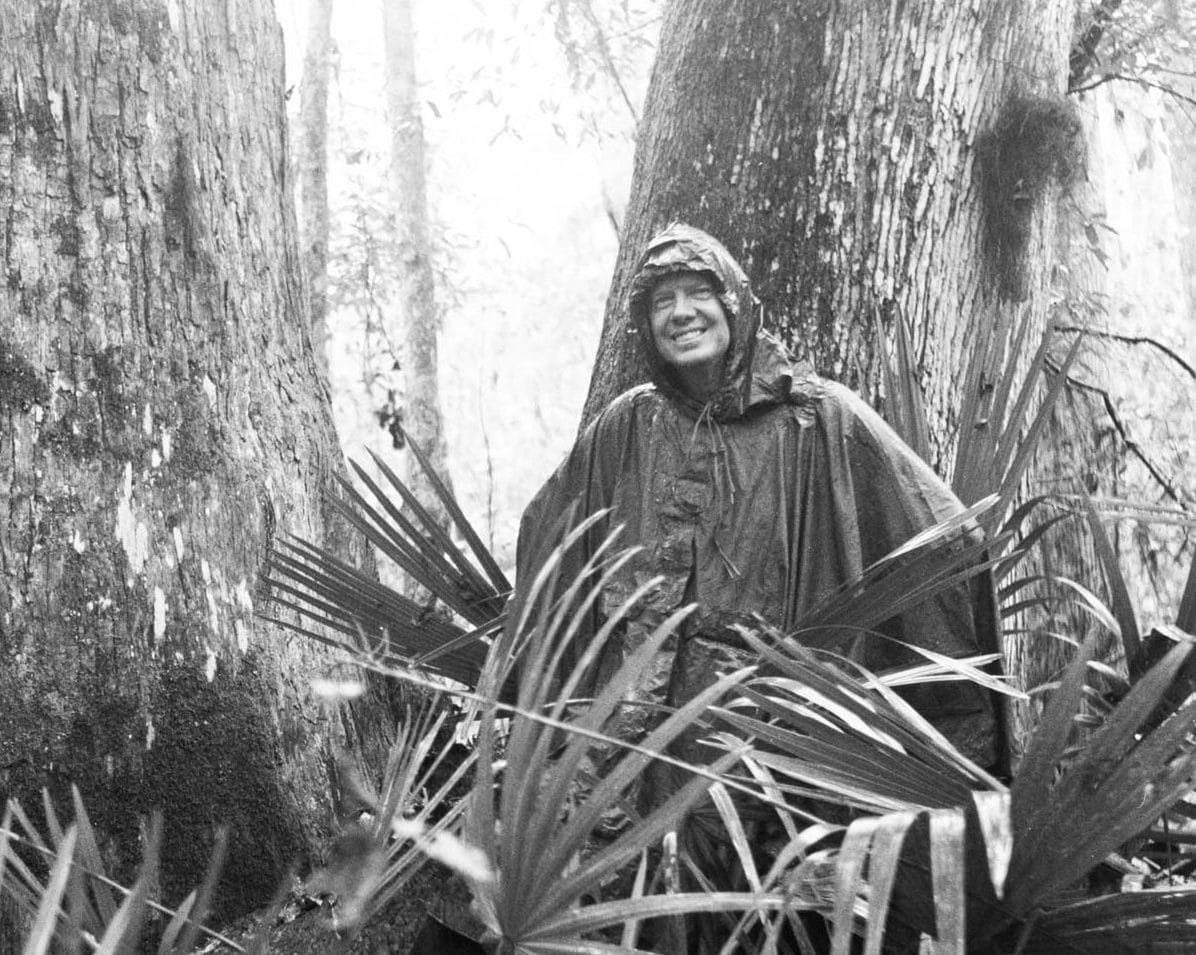
Greatest Conservation President
A Life Dedicated To Conservation
Best selling author and historian Douglas Brinkley, who has authored books examining both Theodore & Franklin Roosevelt’s leadership in the field of conservation and is prominently featured in the documentary, CARTERLAND, makes the case that Carter’s own legacy is a work in progress which will continue to grow over time.
“We still haven’t caught up with how large Carter’s environmental legacy is, but in the 21st century or the 22nd century, it’s going to be a much larger achievement because we would not have been able to save Alaska wilderness if it wasn’t for Jimmy Carter,” notes Brinkley.
Brinkley’s assessment leads us to our second criteria. It’s qualitative.

“One can long for the days of a Jimmy Carter. A selfless public servant who told people the truth and had a vision about America the Beautiful. One where we protected our waterways and our woodlands and our wetlands and swamps and coastal areas. We have not had a president since Carter that prioritized conservation. That made it one of their number one things.”
-author & historian douglas brinkley
The Depth Of One’s Commitment
Our second criteria involves the depth of one’s commitment--whether conservation is part of a political leader’s core beliefs or simply an issue to be championed when it’s politically advantageous to do so.
This is important because if it’s an issue to be championed only when it’s politically advantageous to do so then it’s an issue to be discarded when it’s no longer “good politics.”
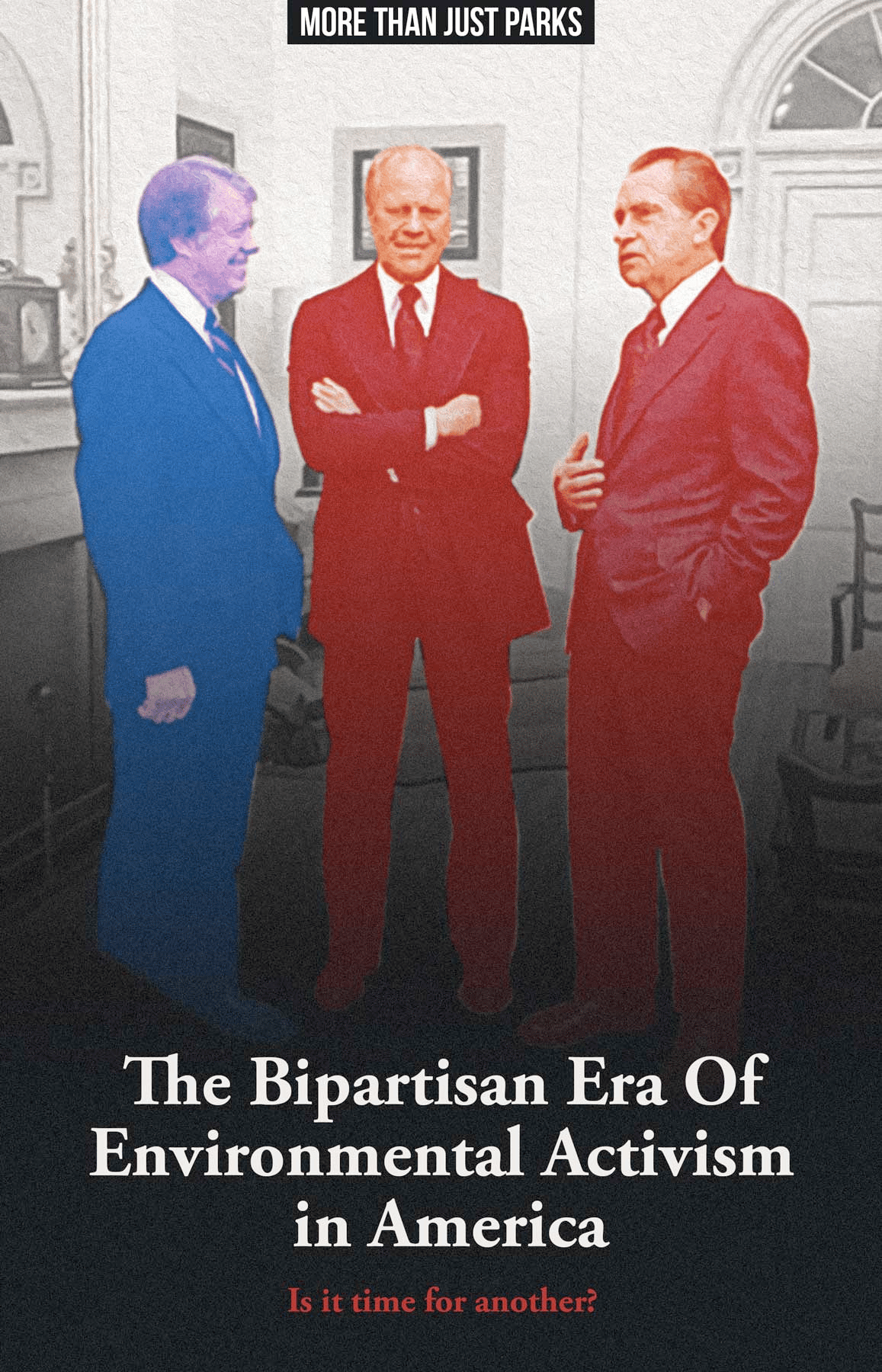
To learn more about this political conundrum and why it matters, I recommend our article on The Bipartisan Era Of Environmental Activism.
We Have Not Had A True Conservation President Since Carter
A commitment to conservation and environmental protection formed an integral part of Jimmy Carter’s core beliefs from a very early age.
Long before he pursued a career in politics, Jimmy Carter had a love of the outdoors. At a very early age, he understood the need to protect our nation’s public lands.
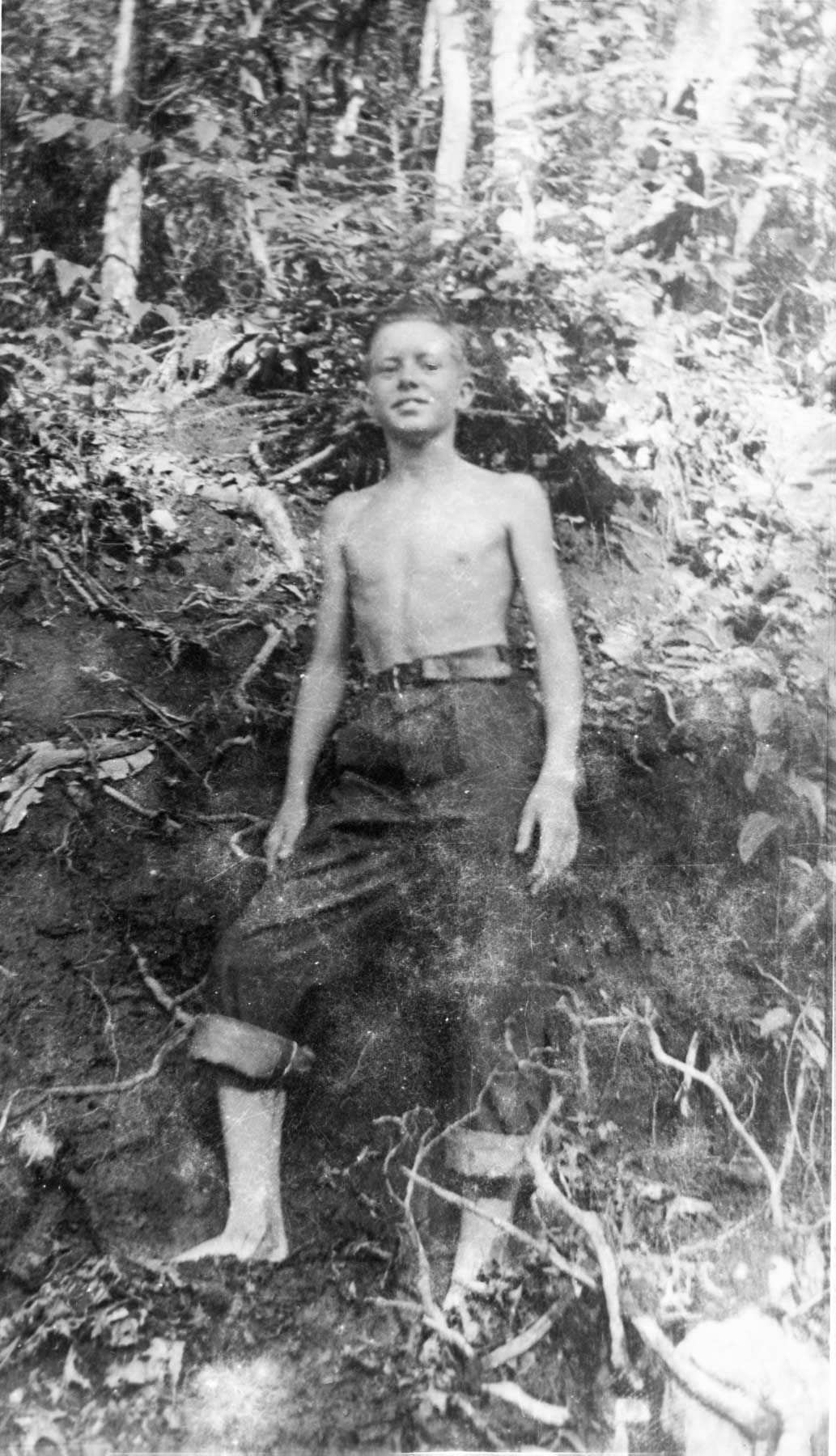
This became an integral part of who he was and how he would govern. Best selling author and journalist Jonathan Alter, who also appears in the documentary CARTERLAND, recently published a biography of Jimmy Carter.
Alter concludes that “Carter’s faith, his belief in human rights, and his environmentalism all contain a moral imperative. They all are connected to a deep sense of morality that suffuses his attitude toward life.”
The Influence of Rachel Clark
Award winning journalist and Carter biographer Jonathan Alter (author of His Very Best: Jimmy Carter, A Life) attributes Carter’s love of the land to his friendship with an African-American sharecropper named Rachel Clark.
“The real connection to a spiritual life and to a life of appreciation of nature he attributes to a woman named Rachel Clark, an illiterate sharecropper whose husband was the foreman on the Carter farm.
Rachel would take Little Jimmy fishing. She taught him all about wildlife and the flora and fauna of Southwest Georgia.
She imbued in him a connection between spiritual life and nature that helped to power his passion for the environment.” (Source: Carterland)
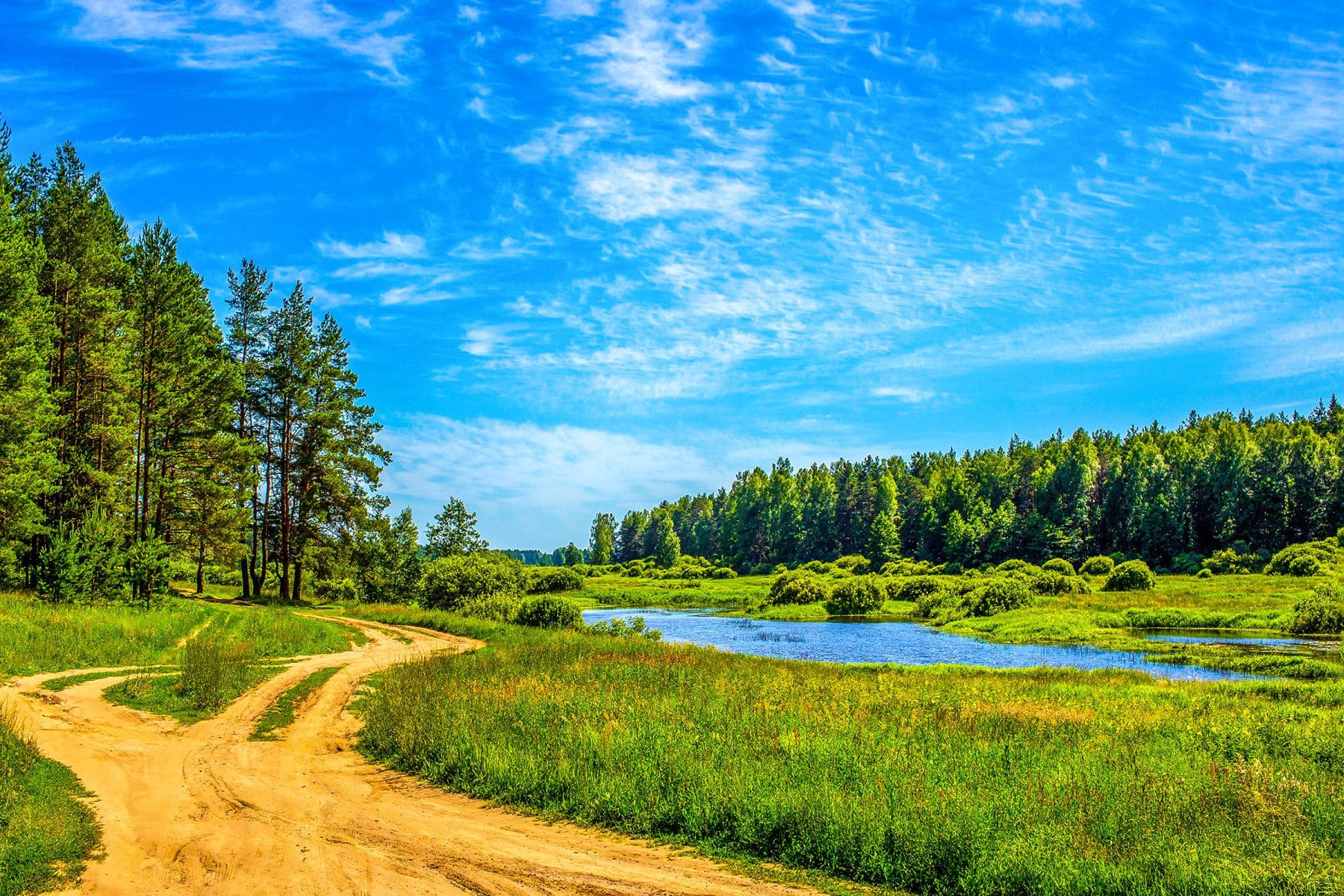
A Lifelong Reverence For The Natural Environment
Phil Wise grew up as a neighbor, friend, and he went on to work for Jimmy Carter in Georgia and in Washington D.C. He understood how Carter’s upbringing shaped his reverence for nature.
“Jimmy Carter grew up on a farm in rural South Georgia,” Wise notes, “and he grew up hunting and fishing and understanding the resonance of the seasons and the importance of conservation and he carried that with him the rest of his life and it’s part of his love of nature.”
Before reaching the Oval Office and establishing himself as one of the United States’ most conservation-minded Presidents, Jimmy Carter had proven himself to Georgians to be a strong champion of his own state’s natural resources.
In 1967, alongside leaders in business, government, and academia, Carter, who had served in the Georgia State Senate, lent his support to the creation of the Georgia Conservancy.
“I honestly believe that our greatest potential force for meeting challenges to our environment is in the several thousand highly-motivated and well-educated Georgians who are members of the Georgia Conservancy,” said Carter in his remarks at the 1968 Georgia Conservancy Conference.
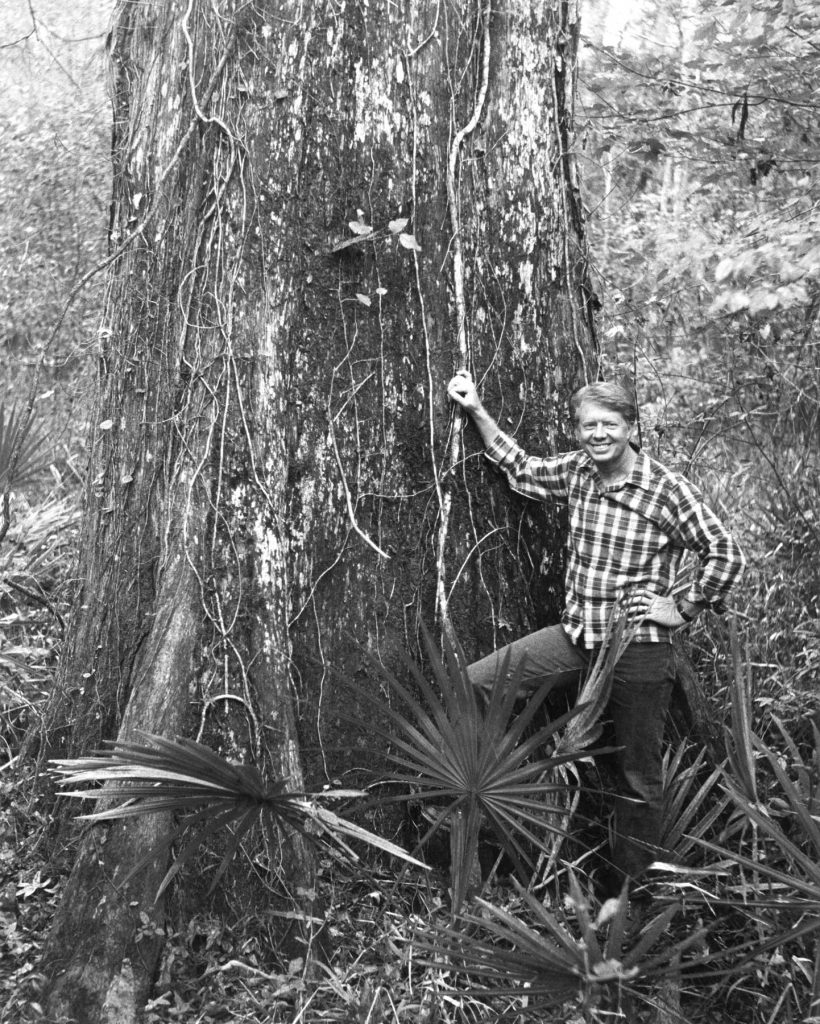
The Conservation Governor
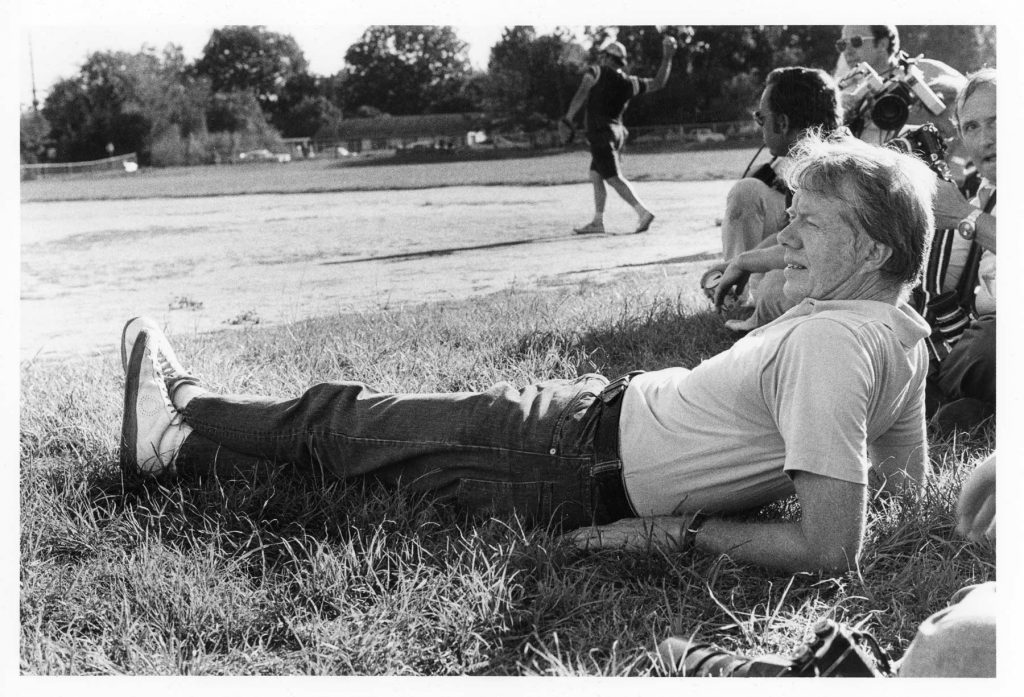
After he became governor of Georgia, as Jonathan Alter notes, Carter cancelled the Sprewell Bluffs Dam Project on his 50th birthday.
Carter was the first and only governor to cancel a major dam project. The proposed dam at Sprewell Bluff would have flooded one of the most scenic river valleys in the state.
Carter knew those waters well. He had spent time canoeing and kayaking the Chattahoochee River. He understood its importance as only a true naturalist could.
Wise states, “He saw himself as a protector of the environment in Georgia and, after he became president, for the whole country.”
The Endangered American Wilderness Act
In 1978, President Carter signed the Endangered American Wilderness Act. In his remarks at the bill signing, he said:
“This act will add about 1.3 million acres in 10 Western States to the wilderness areas of our country, expanding 4 existing wilderness areas and adding 13 new areas at this time.
This represents the largest single addition to the wilderness areas of our country since the original enactment of the wilderness act in 1964, and it brings the total acreage in this system now to 15.7 million acres.”
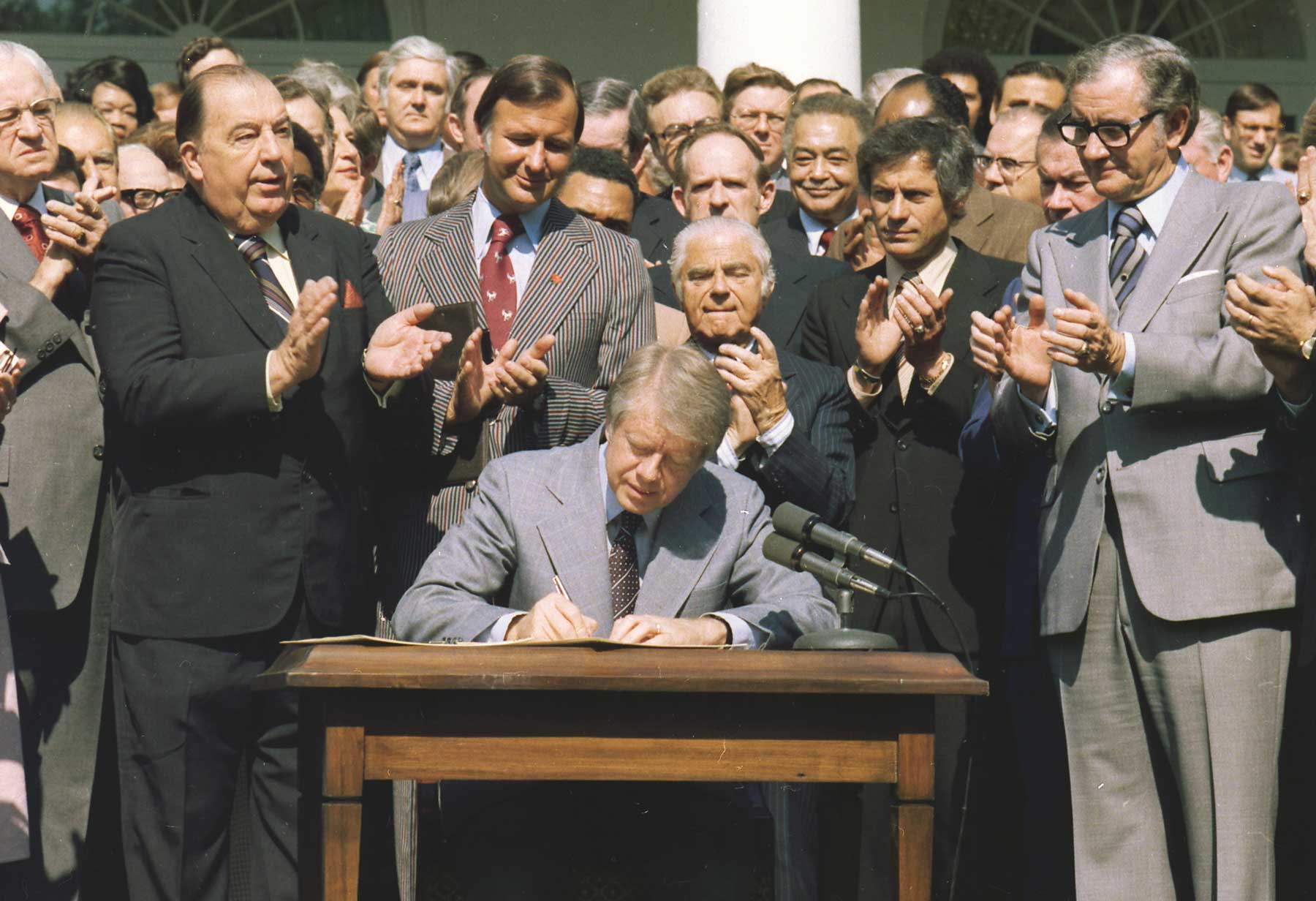
A Greater Understanding Of Our Public Lands
Rose Marcario, a former CEO of Patagonia who was interviewed for CARTERLAND, agrees with Wise and Alter that Carter’s conservationist ethic was an integral part of who he was and how he governed.
She concludes, “He was really ahead of his time in blocking these dam projects. As a conservationist, as somebody who cared about going out into wilderness, I think he intuitively understood that this was not going to be a good thing for American rivers and he was ahead of his time in that way.”
Carter did his best to kill some environmentally harmful, pork-barrel water projects despite the political cost to himself. In this regard, he stands alone. No other president, before or since, was willing to challenge the pork barrel politics behind building public damns across America.
Greatest Conservation President
Jimmy Carter vs Theodore Roosevelt
Now one can argue that Theodore Roosevelt also led a life devoted to a love of the wilderness and a desire to protect it at all costs. One can also argue that Roosevelt was just as willing to challenge the special interests of his time as Carter was during his.
Roosevelt understood the importance of our national parks as very special places. Carter, however, had a more expansive understanding of America’s public lands, which includes the waterways that represent their lifeblood.
Lynn Scarlett, vice president of the Nature Conservancy and another CARTERLAND participant, spoke about this larger understanding.
She says, “People didn’t think as much about water and rivers. So Carter stepped up and said we need Wild and Scenic Rivers. Let’s not think of conservation as about lands. Let’s think about it as referring to waters too.”
Winning The Future For All Of Humankind
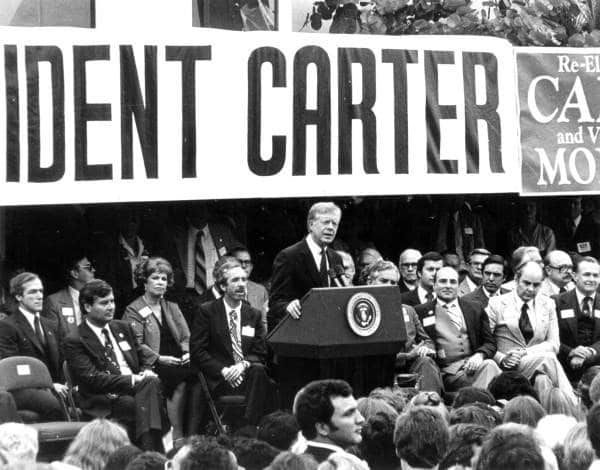
This leads us to our third and final criteria. We call it: Winning The Future For All Humankind.
It refers to a leader’s ability to gaze into that proverbial “crystal ball” and see which issue (or issues) potentially pose the greatest threat for humankind going forward. And, more importantly, try to do something about it.
Since the successful detonation of the first atomic bomb at Los Alamos, New Mexico, in July of 1945, that issue has been recognized as avoiding nuclear war.
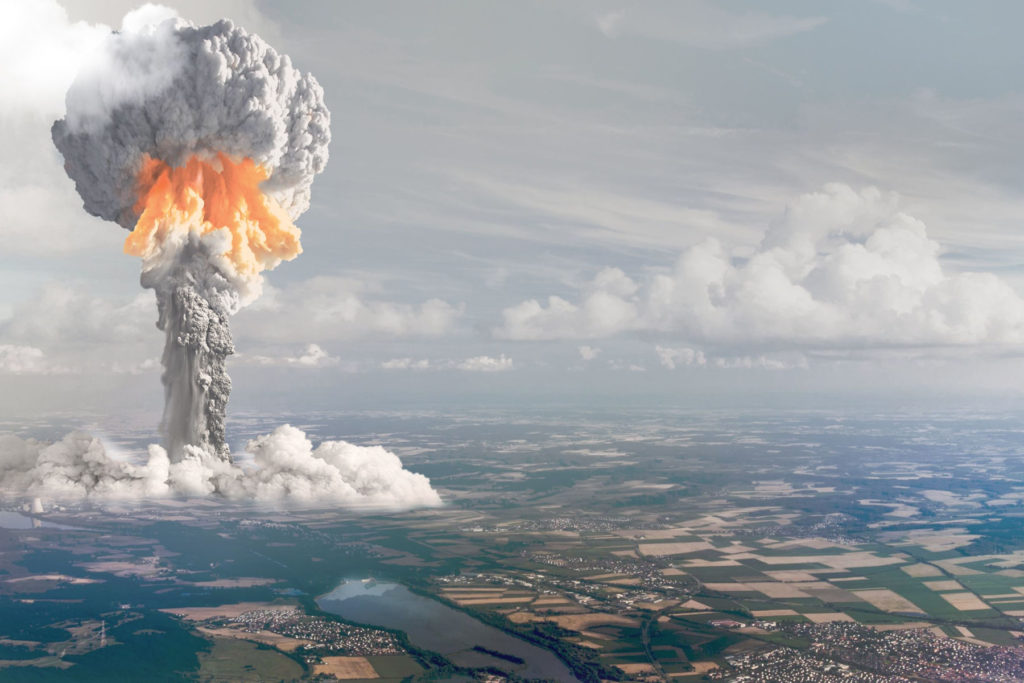
President Richard Nixon said, “The greatest honor history can bestow is that of peacemaker.”
Arms control agreements in the 1970s and 1980s were intended to reduce the stockpiles of these weapons of mass destruction in an effort to make our planet a safer place.
It was Jimmy Carter, however, who first understood that there was another looming threat to our planet which could prove as catastrophic as a nuclear conflagration if not successfully addressed.

The First Administration To Understand The Threat Posed By Climate Change
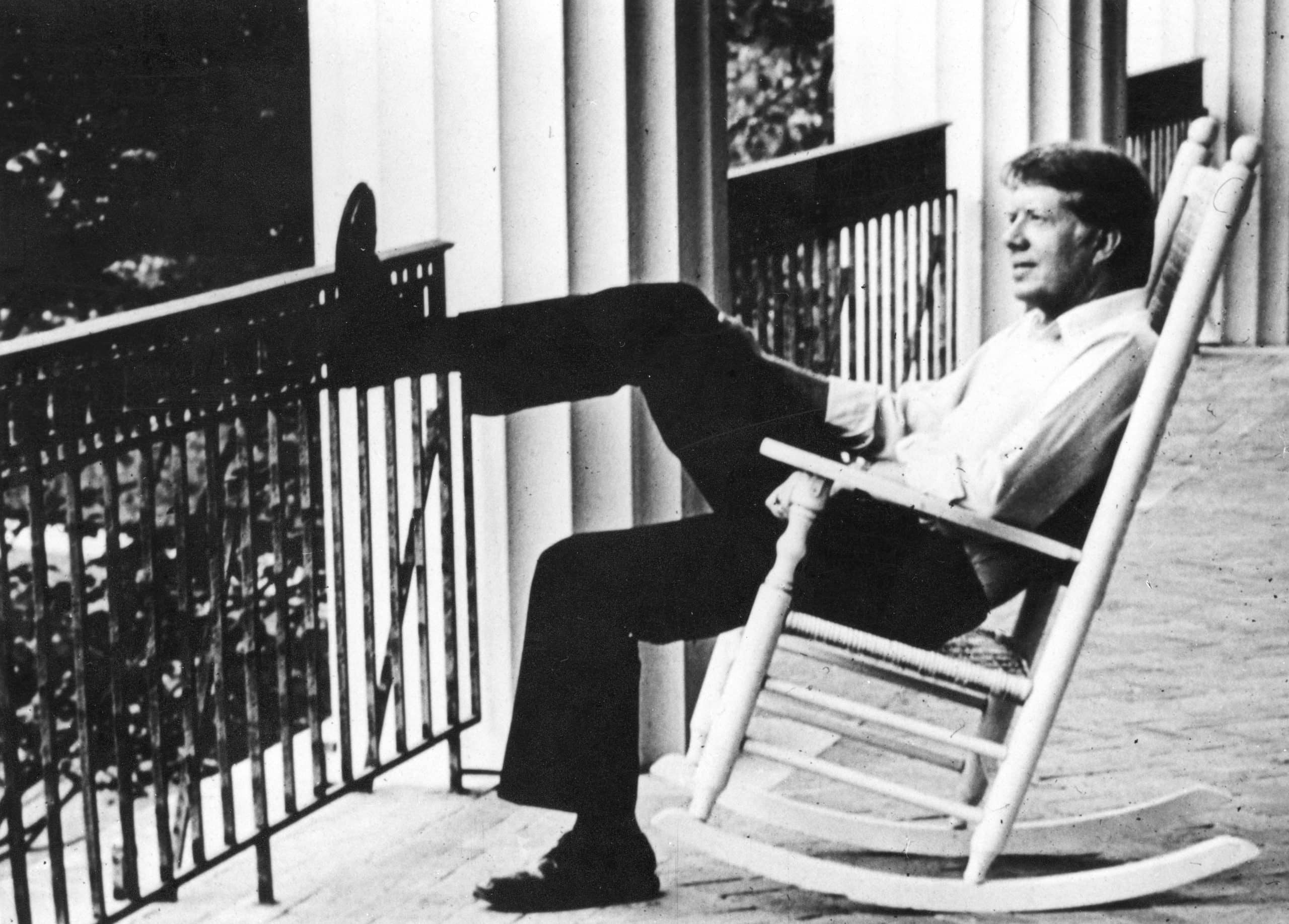
As The Guardian reported, a few days after the Independence Day celebrations on July 4, 1977, a memo landed on the President’s desk which had the ominous title “Release of Fossil CO2 and the Possibility of a Catastrophic Climate Change.”
Carter seems to have heeded this warning, and, while he did not make sufficient progress on the climate crisis given his single term in office, he did sign significant pieces of environmental legislation, including initiating the first federal toxic waste cleanups and creating the first fuel economy standards.
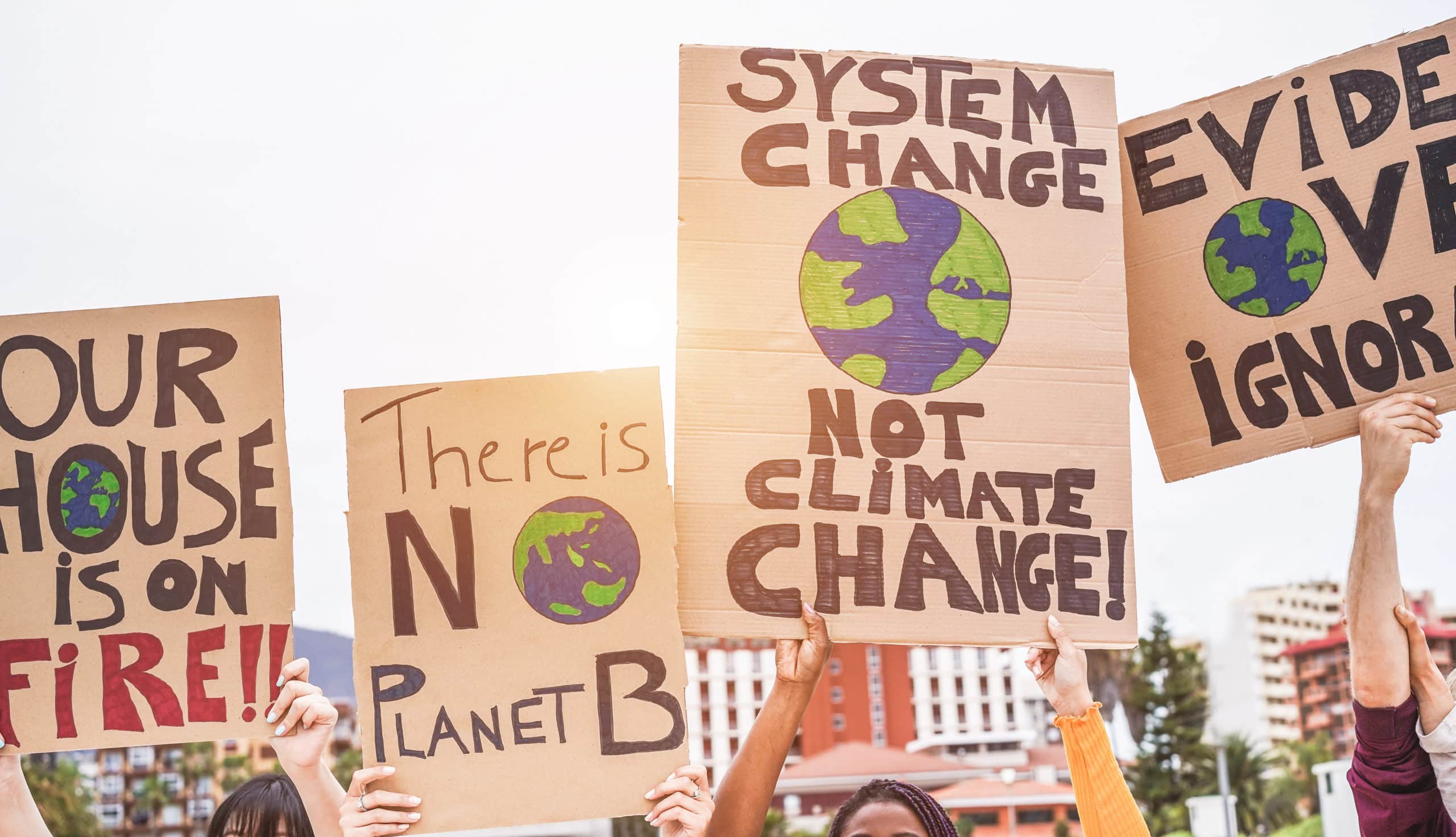
The First Leader To Acknowledge The Seriousness Of Climate Change At The Presidential Level
Gus Speth, who was the co-founder of the Natural Resources Defense Council, also served as Jimmy Carter’s Council on Environmental Quality Chairman.
Speth, who appears in CARTERLAND, notes that “Carter was really the first one to acknowledge the seriousness of the climate threat at the presidential level.”
Speth goes on to state that President Carter was the first leader to tackle this important issue by providing a comprehensive assessment of the challenges confronting humankind.
“We asked the President to do a big report on what the country might look like in the year 2000, twenty years down the road, if we didn’t respond to global scale challenges in environment and resources and population.”
“So it took us much of the administration to do it, but we finally produced what became known as the Global 2000 Report. In 1980, we released the Global 2000 Report and it was an eyeopener and it really gave birth to this international environmental agenda.”

Greatest Conservation President
Imagine A World Without Carter’s Leadership
Jimmy Carter picked up the torch of the environmental movement, but lost reelection in 1980.
What this meant for successive generations is that climate change would be ignored, both by Democratic and Republican administrations, until the 2016 Paris Climate Agreement.
The United States would commit itself to that agreement under President Barack Obama and then withdraw from it under President Donald Trump.

Theresa Pierno, President and CEO of the National Parks Conservation Association and another CARTERLAND participant, had this to say about the difference which President Carter’s leadership made.
“He was willing to take on industry that even today very few are willing to and when you look at choices of extraction versus preservation, he always supported preservation.”
“I think he just understood that his role in protecting these incredible treasures and these resources was so important and that that was really going to require somebody to be willing to be that fearless outspoken individual that he is and was and continues to be.”
Greatest Conservation President
The Difference Jimmy Carter Could Have Made Is The Difference
Given Carter’s visionary leadership in the area of climate change, Rose Marcario contends that, “If we had kept innovating we would have solved the crime climate crisis already.“
“We would have solved the crisis already if we’d continued along the path that President Carter had. I don’t think you could say that about any other president.”
Jonathan Jarvis concurs adding, “You know if Carter’s policies had been adhered to since [1980] then we wouldn’t be having a climate crisis right now.“
“We would already have converted substantially to renewables and kept a lot of the stuff in the ground and that message is as relevant today, maybe even more relevant today than it was then.”
Looking back over forty years ago, we can now see that what was on the ballot in 1980 was climate change and whether we, as a nation, would take concrete actions to halt its destructive effects.
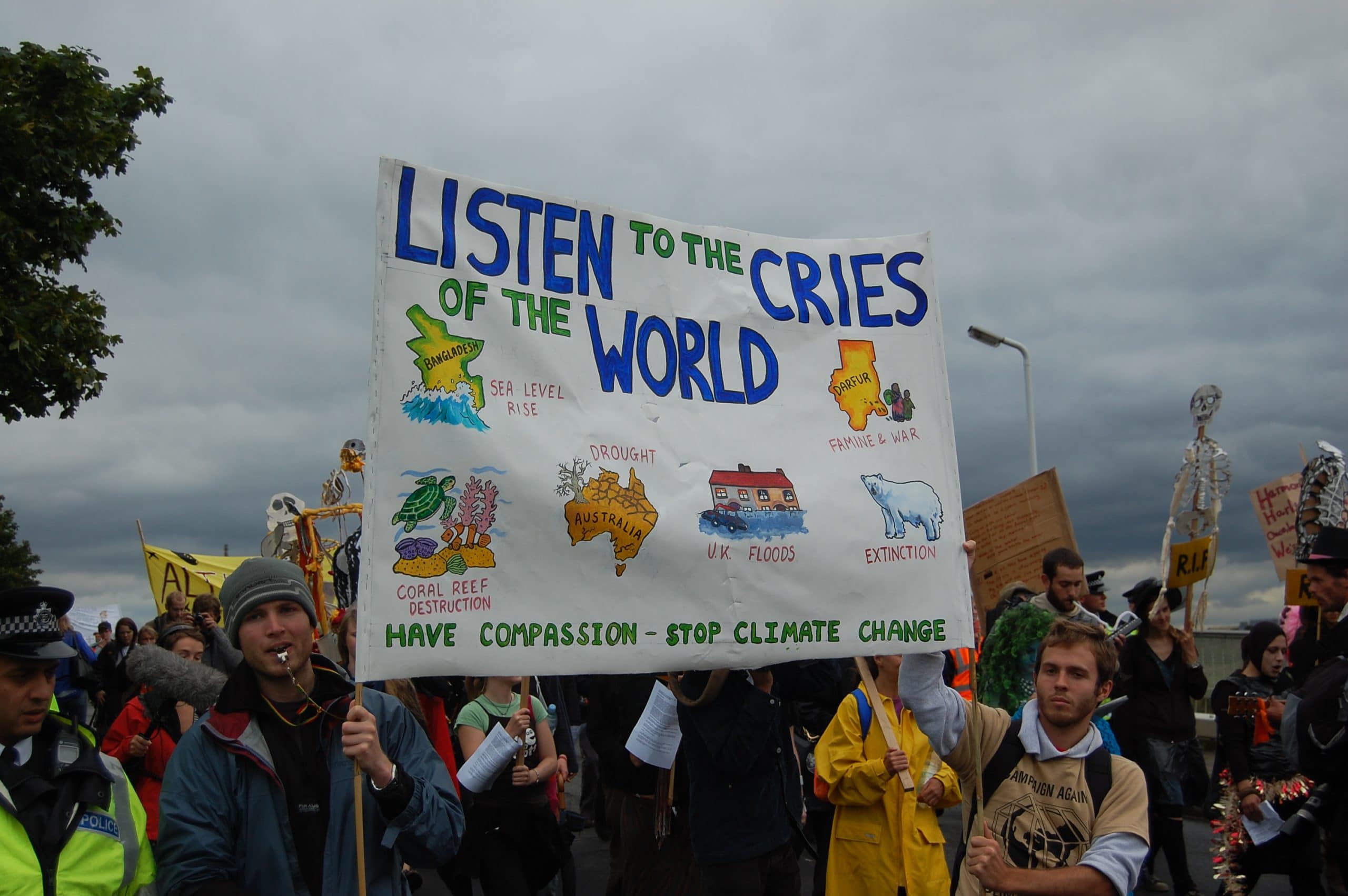
“It’s been enormously frustrating to realize that if we had started with Carter — this is now more than 40 years ago — and continued after his administration, we could have been on a path, a smooth trajectory of sensible reductions in fossil fuel use, to the point that today we could be approximating getting out of the fossil fuel business. But of course, that’s not what happened. In fact, our carbon emissions went up in that 40-year period.”
-Gus Speth 2021 Interview with bill mckibben
Why Carter Stands Above The Rest
The difference Carter could have made as we find ourselves grappling with the adverse effects of climate change over forty years later is the reason why he stands above all of the rest–including Theodore Roosevelt.
As best-selling author and Schumann Distinguished Scholar in Environmental Studies at Middlebury College Bill McKibben notes, “Imagine if we’d followed Carter’s lead and actually done the work to make sure that by 2000 the United States was running on 20 percent solar energy.“
“It would have been hard as hell–hard as the Apollo Project, or the Manhattan Project that Carter referenced when he made his proposal. But the technological breakthroughs that came in the 2010s would have come in the 1990s–in time for China to adopt them as it began its rapid acceleration.“
“Our use of fossil fuels would have peaked decades ago and the rest of the world would have followed in train. The carbon curve would have bent decades earlier.”

The Twin Pillars Of The Conservation Movement
At the dawn of the 20th Century, Theodore Roosevelt took executive actions to enshrine public lands conservation as a national priority. In doing so, he set the standard for each of his successors.
Roosevelt once said, “There can be no greater issue than that of conservation in this country.”
Almost three quarters of a century after Roosevelt left office, Jimmy Carter said, “I want to make it clear, if there is ever a conflict [between environmental quality and economic growth], I will go for beauty, clean air, water, and landscape.”
While one can argue that Roosevelt did not have the benefit of an emerging science of climate change, Carter was willing to risk his political future by embracing an issue whose significance a vast segment of the public still failed to understand or appreciate.
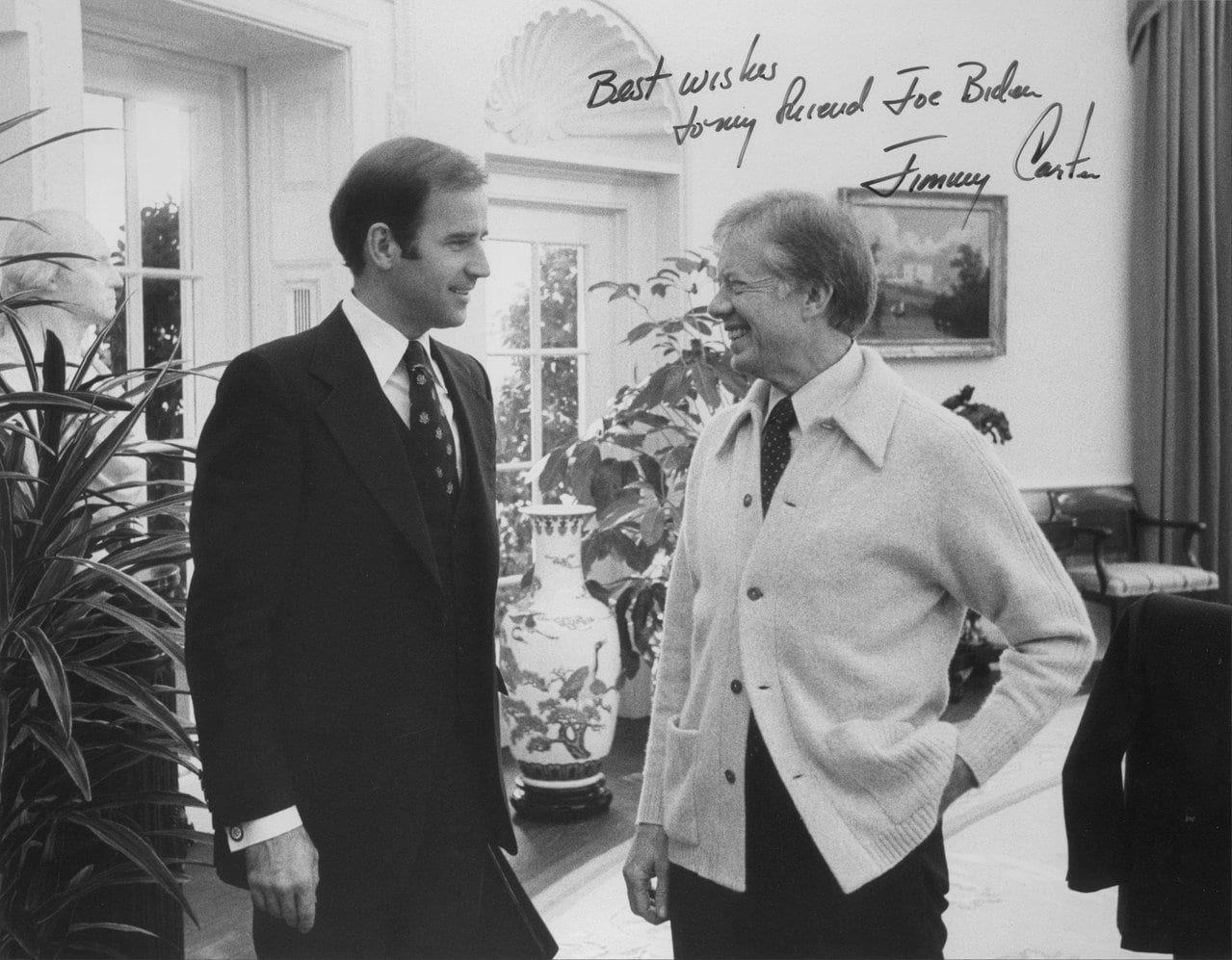
Carter Considered The Global Ramifications Of Our Carbon Footprint
Carter not only built on Roosevelt’s conservation legacy, he was the first global leader to recognize the problem of climate change.
Theodore Roosevelt made us aware of the need to protect our public lands. Jimmy Carter was the President who wanted us to do something to stop climate change.
At the presidential level, these two men can be regarded as the twin pillars of the conservation movement.
And, from a conservation standpoint, it can be argued that while Theodore Roosevelt recognized and took action to address the greatest problem confronting our nation, Jimmy Carter recognized and took action to confront the greatest problem confronting our world. Advantage Carter!
A Tireless Commitment To Preserving & Protecting Our Natural Environment

Jimmy Carter demonstrated, throughout his entire life, a tireless commitment to preserving and protecting our natural environment.
It was of the greatest importance to him because he understood that it is of the greatest importance to generations yet unborn. Simply put, Carter was more interested in the next generation than the next election.
At The Guardian noted in 2021, “Americans must process his mortality and the onset of climate change, which Carter explicitly warned the nation about 40 years ago.”
Jimmy Carter was the first leader to tackle what has emerged as the most serious challenge to America’s public lands in the twenty-first century.
When you add this to his other achievements in conservation and the environment then what you have is the Greatest Conservation President in our nation’s history. Sorry Teddy.
A Legacy Of Conservation & Environmental Achievement
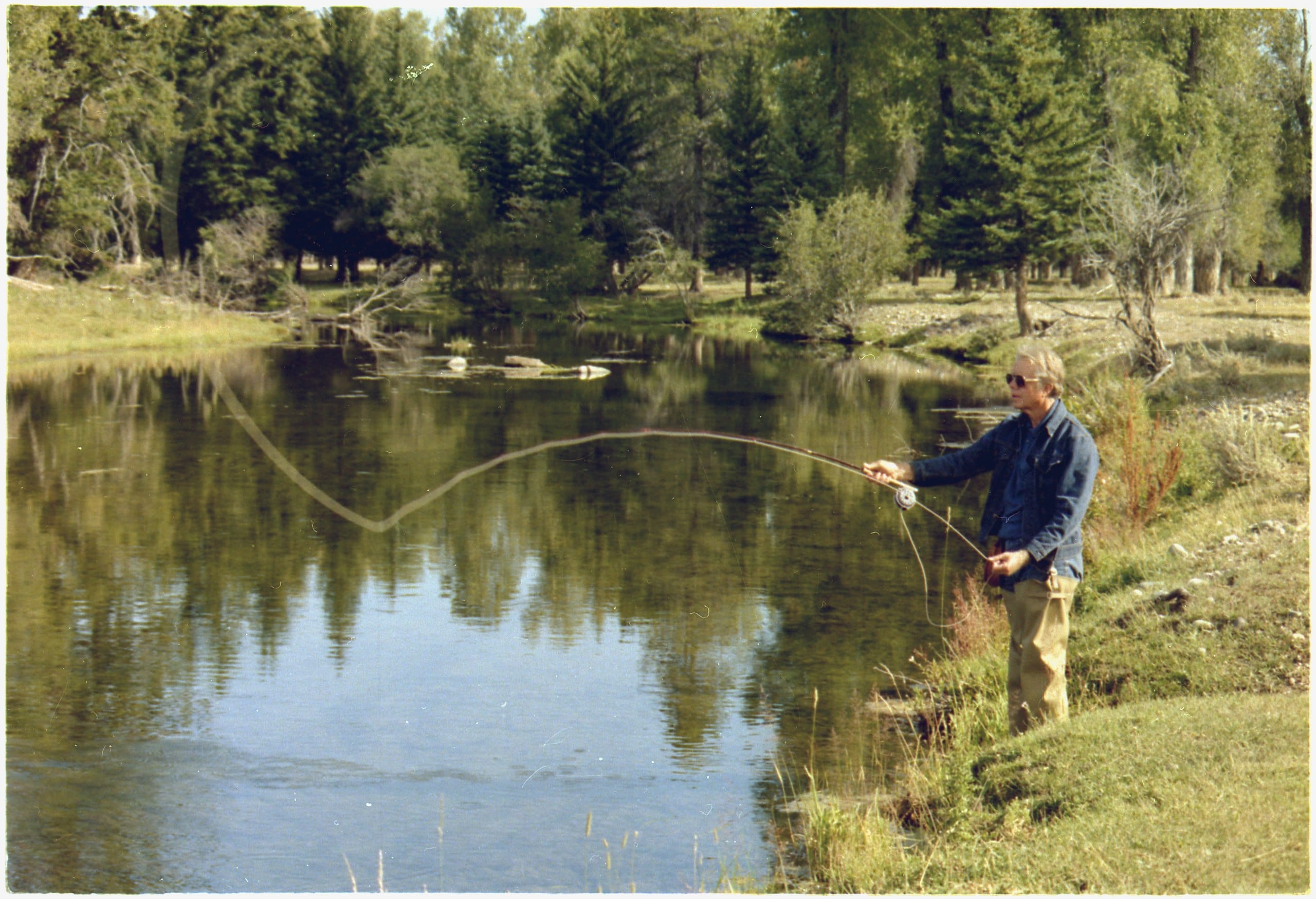
Jimmy Carter’s Conservation Achievements as Governor
To recap, during Jimmy Carter’s years in public service as a State Senator, Governor of Georgia, and President of the United States, he worked to strengthen environmental laws and often took politically risky positions on issues affecting the environment because he believed it was the right thing to do.
His achievements before he became President of the United States in these include the following:
- Establishment of the Georgia Heritage Land Trust to purchase and preserve unique lands.
- Creation of wildlife enhancement programs such as the reintroduction of wild turkeys.
- Suspension of the construction of a large dam on the Flint River south of Atlanta.
- Founding the Georgia Conservancy to promote environmental awareness among the public and industry.
Jimmy Carter’s Conservation Achievements as President
- Passage of the Endangered Wilderness Act.
- The Passage of the Alaskan Lands Bill which protected more than 150 million acres of wild lands and scenic rivers.
- Passage of the Surface Mining Control and Reclamation Act of 1977.
- “Super Fund” legislation that provided monies and direction to clean up toxic waste dumps.
- Establishment of a national energy policy.
- Legislation to strictly control strip mining.
- Commissioned the Global 2000 Report which was the first effort to examine and address the threats posed by a changing climate.
But Wait, There’s More – Jimmy Carter’s Presidency Was Not What You Think
Regrettably, the political narrative surrounding President Carter in the aftermath of his 1980 defeat to Ronald Reagan has largely been shaped by his political adversaries. The reality, however, is quite different.
Kai Bird is a Pulitzer Prize-winning historian and journalist. He is the author of The Outlier: The Unfinished Presidency of Jimmy Carter.
Bird notes in a New York Times editorial that Carter was probably the most intelligent, hard-working and decent man to have occupied the Oval Office in the 20th century.
As Bird writes, “His [Carter’s] presidency is remembered, simplistically, as a failure, yet it was more consequential than most recall. He delivered the Camp David peace accords between Egypt and Israel, the SALT II arms control agreement, normalization of diplomatic and trade relations with China and immigration reform.”
“He made the principle of human rights a cornerstone of U.S. foreign policy, planting the seeds for the unraveling of the Cold War in Eastern Europe and Russia.”
In an article which appeared in the Washington Post in February of 2023, the newspaper referred to the former president as: “Jimmy Carter, The President Who Tried To Save The Planet.”
The Post went on to note that: “Despite serving a single term, Jimmy Carter ranks as one of the most consequential U.S. presidents when it comes to environmentalism, according to historians, conservationists and several former federal officials.”
At More Than Just Parks, we believe that Carter was the most consequential U.S. President of all time.
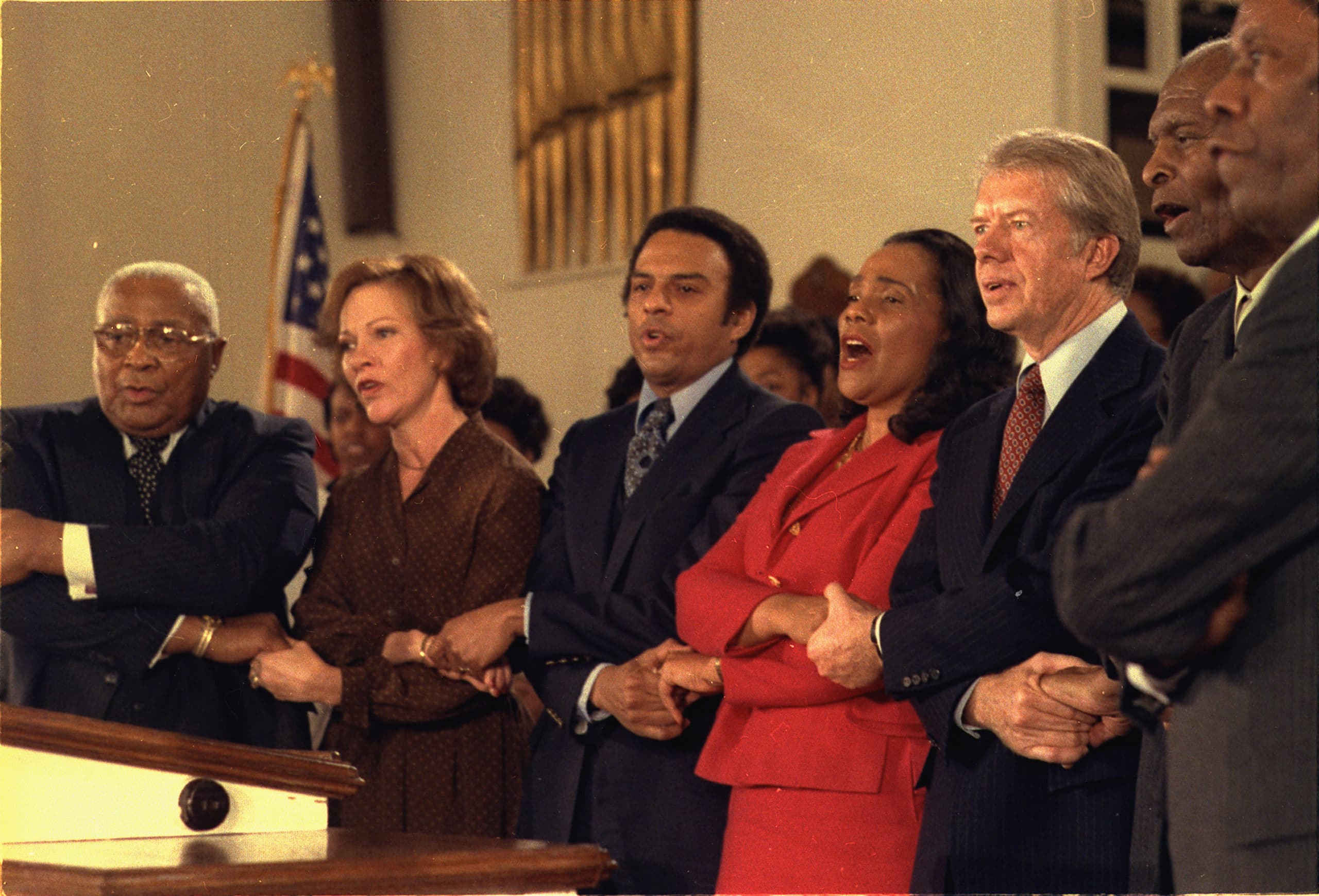
He Accomplished More Than Any President Has Since
Carter biographer Jonathan Alter shares Bird’s assessment. He noted in an interview for CARTERLAND that Jimmy Carter actually accomplished more legislatively than any of his two-term successors. That includes: Ronald Reagan, Bill Clinton, George W. Bush and Barack Obama.
And, in an era in which political scandals have become commonplace, it’s important to note, as author Kai Bird does, that “Mr. Carter’s presidency was virtually scandal free. He often spent 12 hours or more in the Oval Office reading 200 pages of memos a day. He was intent on doing the right thing and right away.”
So, Jimmy Carter wasn’t just the Greatest Conservation President. Despite his defeat in 1980, measured by his accomplishments – especially when compared with his successors – Jimmy Carter was one of our greatest presidents of all time.
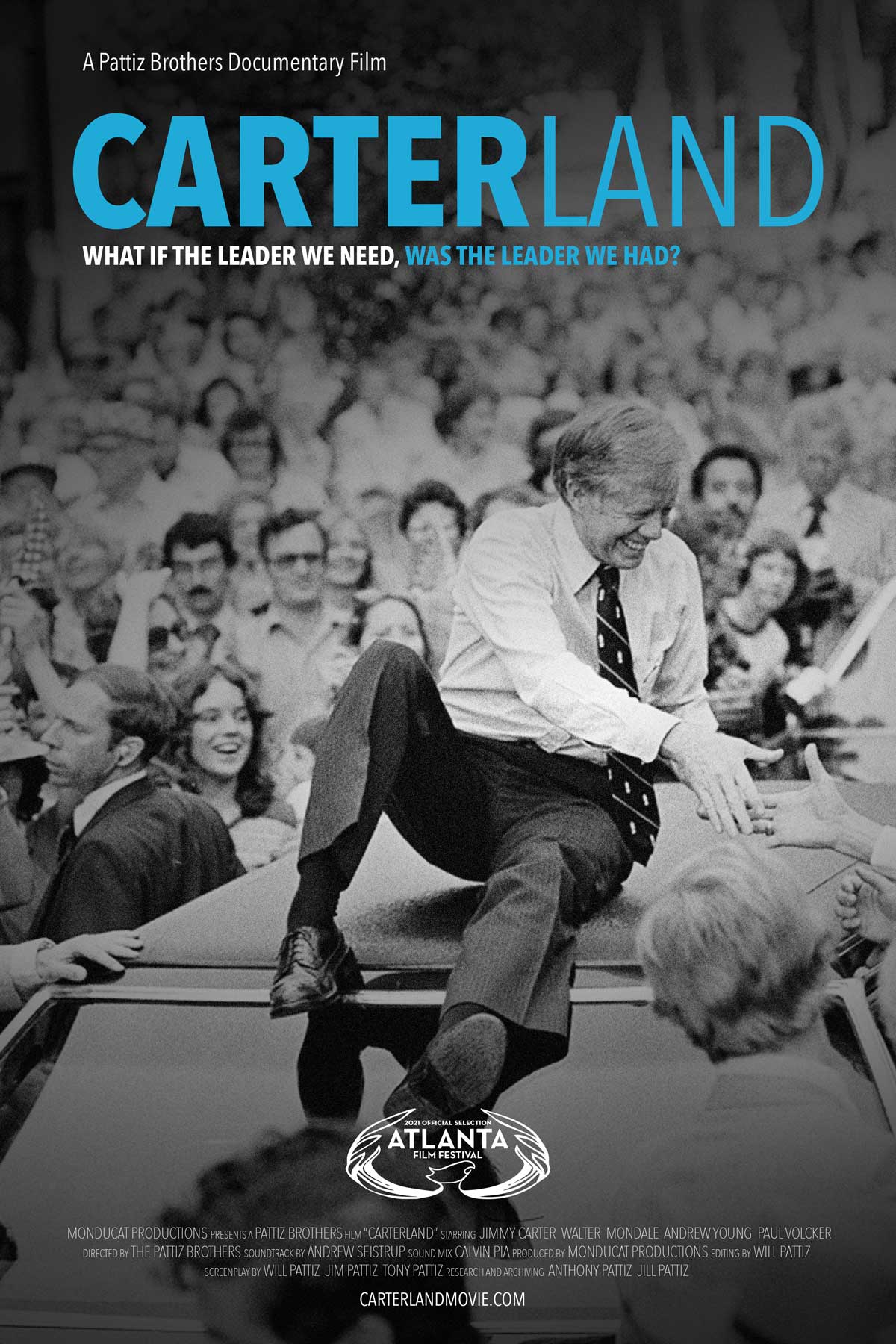
Why Trust Us When It Comes To Jimmy Carter?
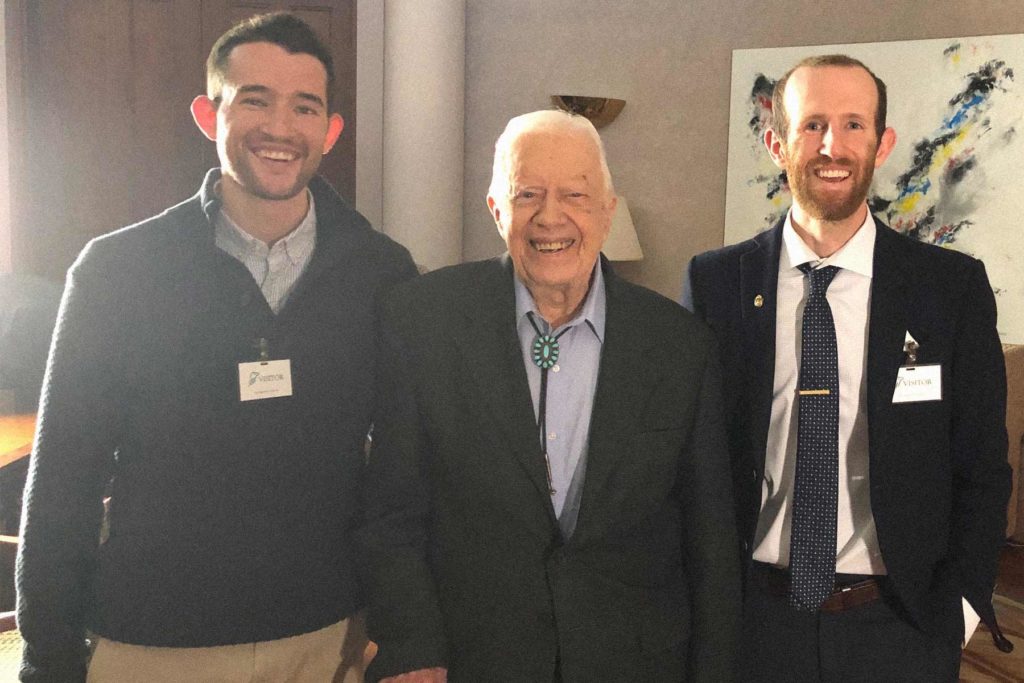
We’re Jim Pattiz and Will Pattiz, collectively known as the Pattiz Brothers (or the Parks Brothers). We absolutely LOVE the national parks.
In 2019, we set out to make a documentary about a man whom we understand was one of America’s greatest conservation presidents. We intended to focus on President Carter’s achievements in this area before realizing, however, that he did far more than we ever understood.
We grew up in Georgia familiar with the conventional narrative that Mr. Carter was a failed president. We’ve since learned that nothing could be farther from the truth.
After spending two years doing research and interviewing people, including former President Jimmy Carter, former Vice President Walter Mondale, former UN Ambassador Andrew Young, former Federal Reserve Chairman Paul Volcker and many others – including experts on the Carter Presidency – we realized that the conventional narrative was not only wrong, but a great disservice to a man whom we have come to regard as one of America’s greatest presidents.
We’re proud that we made CARTERLAND, which won the Best Picture Award at the Atlanta Film Festival.
Learn More About CARTERLAND
Meet The Parks Brothers
We Hope You’ll Follow Our Journey

Our goal here at More Than Just Parks is to share the beauty of America’s national parks and public lands through stunning short films in an effort to get Americans and the world to see the true value in land conservation.
We hope you’ll follow our journey through the parks and help us to keep them the incredible places that they are. If you’re interested in joining the adventure then please sign up below!
Summary | Leave Us a Comment!
That’s a wrap folks! Let us know what you think by leaving us a comment below.
If you like this post you might be interested in checking out our other Jimmy Carter post – 13 Reasons Why Jimmy Carter Is America’s Greenest President.
Latest Posts From More Than Just Parks
- 15 Incredible Things to Do in Great Smoky Mountains National ParkWe’ve listed all the best things to do in Great Smoky Mountains National Park based on our extensive experience exploring the park.
- EPIC Road Trip | Yosemite to Sequoia National Park (Trip Planner)ARTICLE OVERVIEW: Yosemite to Sequoia National Park Majestic Mountain Loop The Majestic Mountain Loop in California covers a scenic road trip from Yosemite to Sequoia National Park, with an added bonus of Kings Canyon National Park along the way. It’s an adventure that can be tackled in anywhere from three days to three weeks. Father…
- The ULTIMATE Fat Bear Week Guide (Photos + FAQs)Fat Bear Week at Katmai National Park brings the biggest bears face-to-face with fans. Here are the answers to your top questions.
- Yosemite’s Fleeting FIREFALL Now Requires Reservations (HOW TO GUIDE)The firefall at Yosemite National Park was once a secret but now it’s spreading like fire. Here’s everything you need to know to get a spot.
- 13 Dry Tortugas Activities That Will BLOW Your Mind (+EPIC Photos)Dry Tortugas National Park off Key West mixes history, shipwrecks, snorkeling, and scuba diving on an epic level. Let’s plan your trip now!
Greatest Conservationist President, Greatest Conservationist President, Greatest Conservationist President, Greatest Conservationist President, Greatest Conservationist President, Greatest Conservationist President
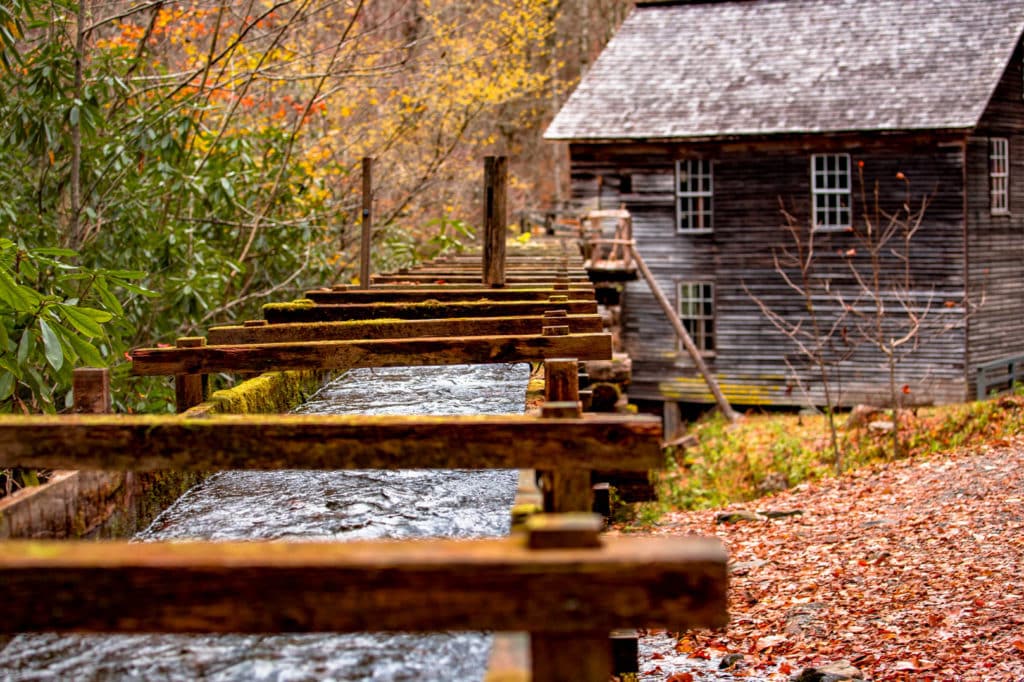
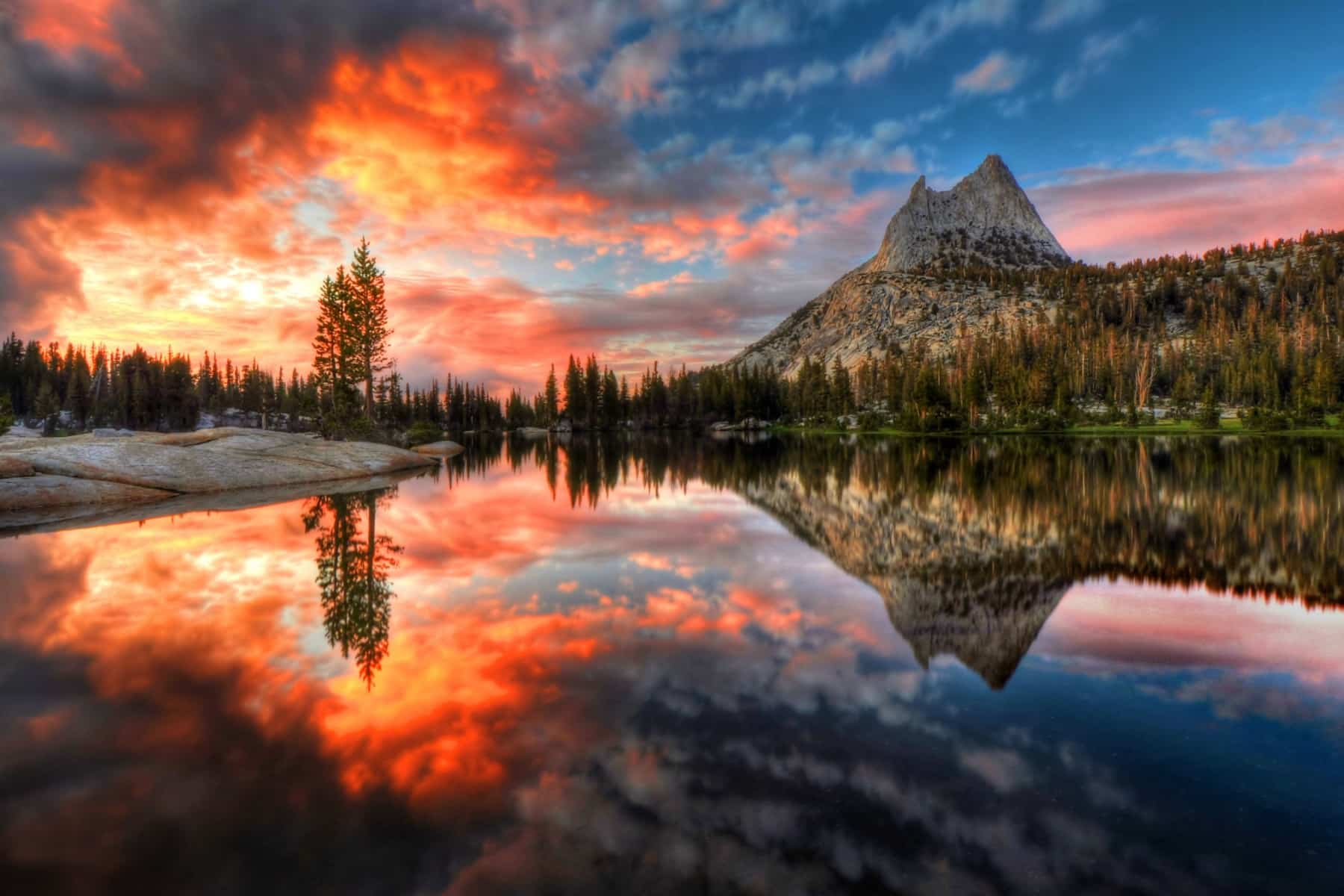
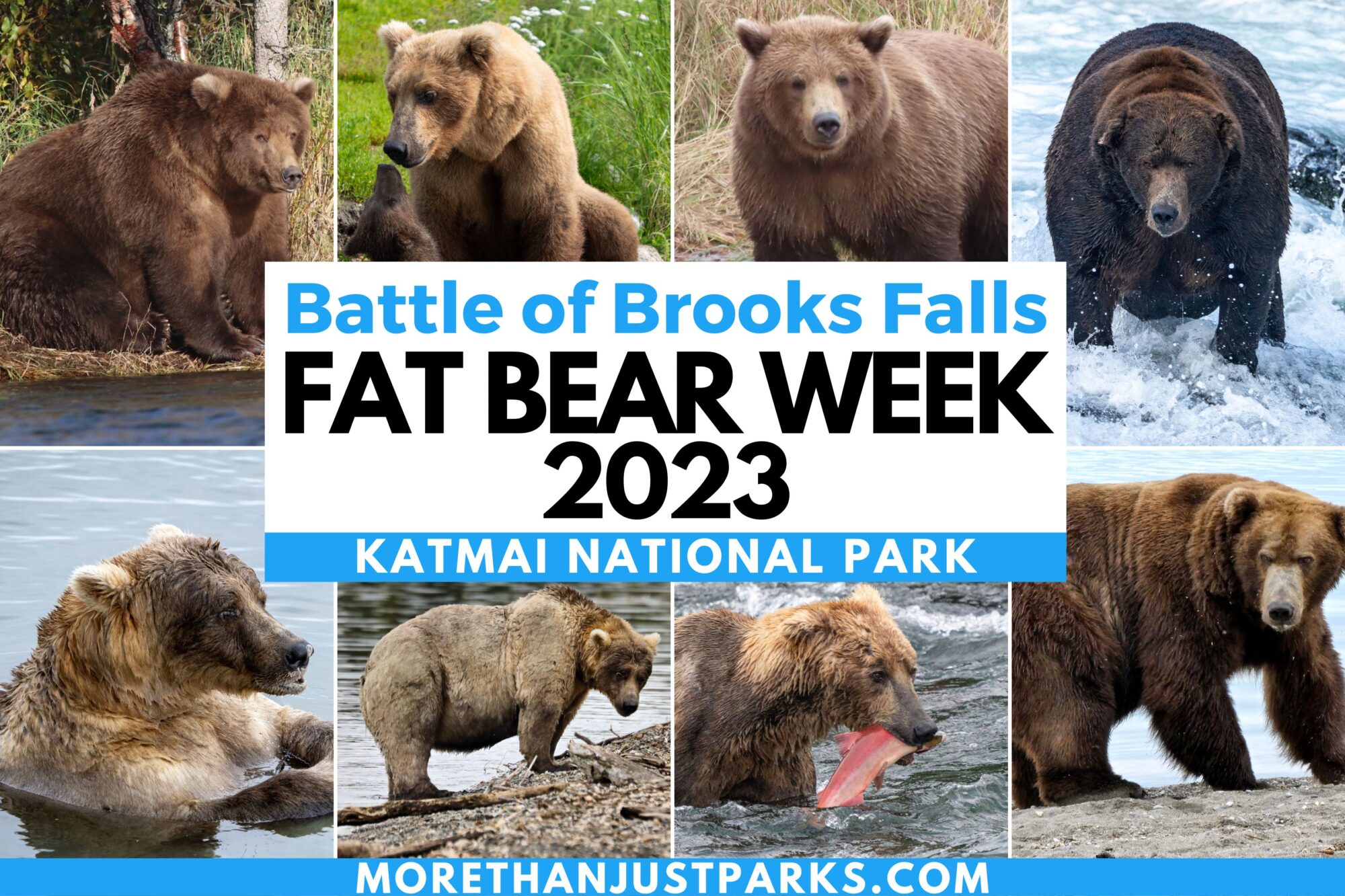
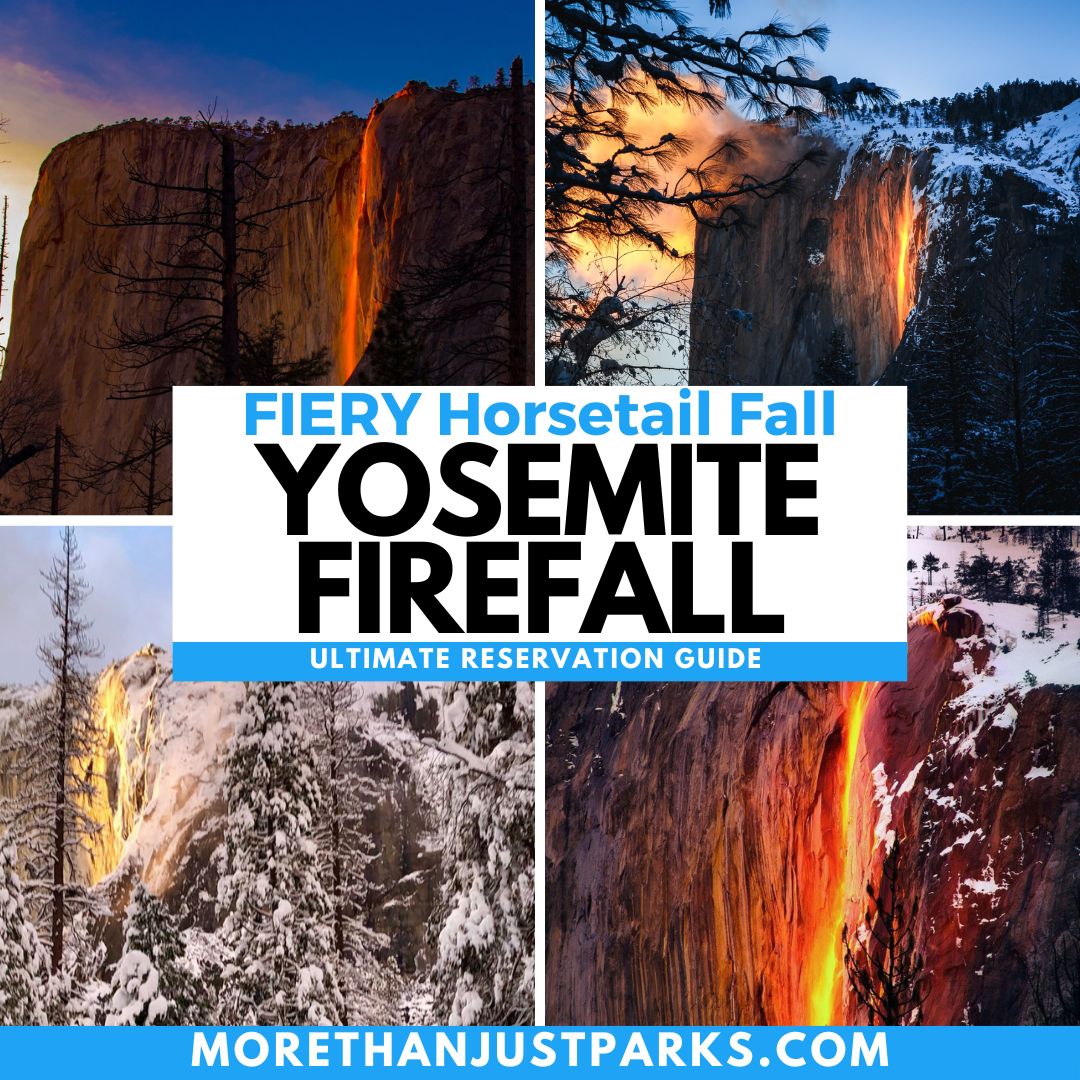
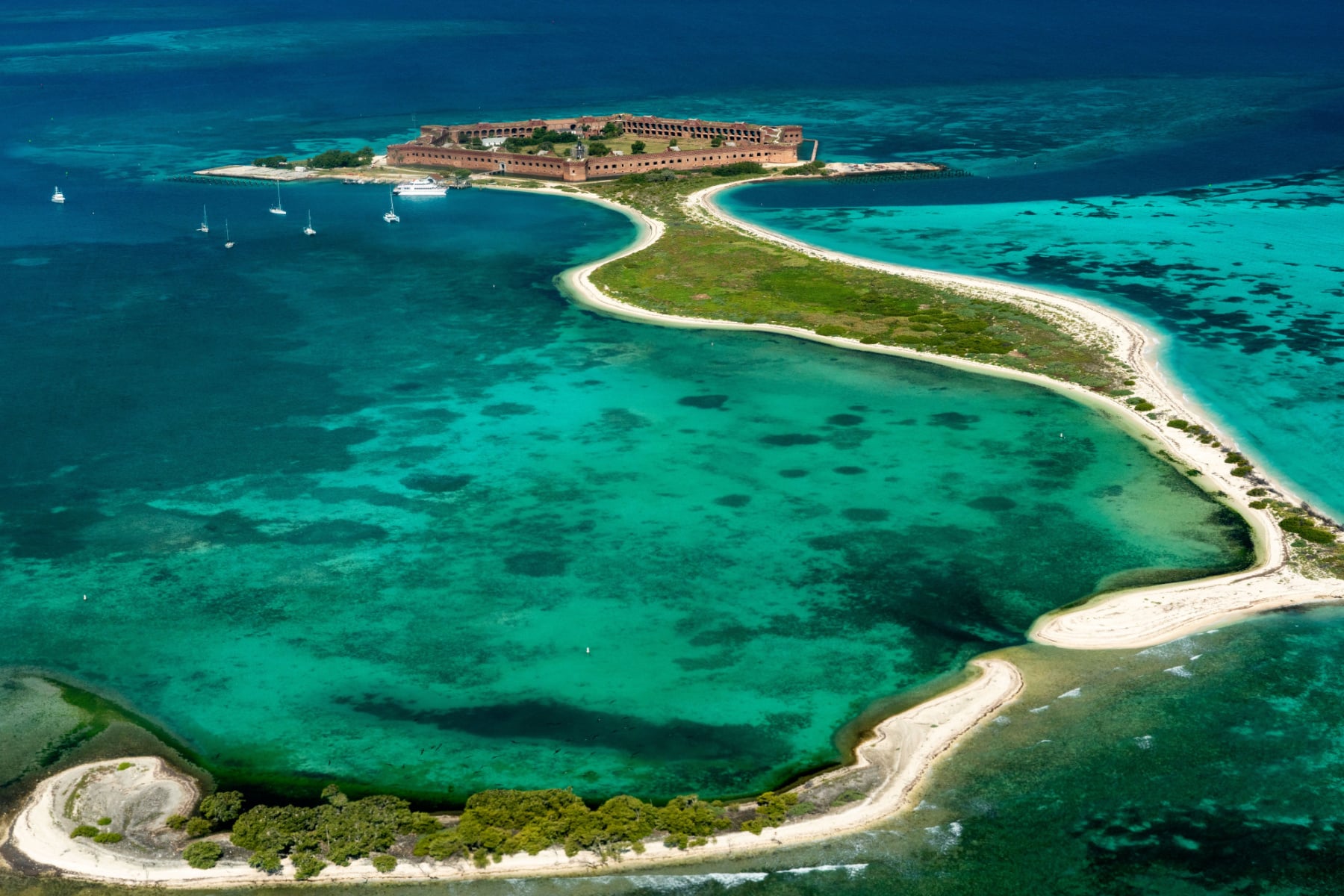

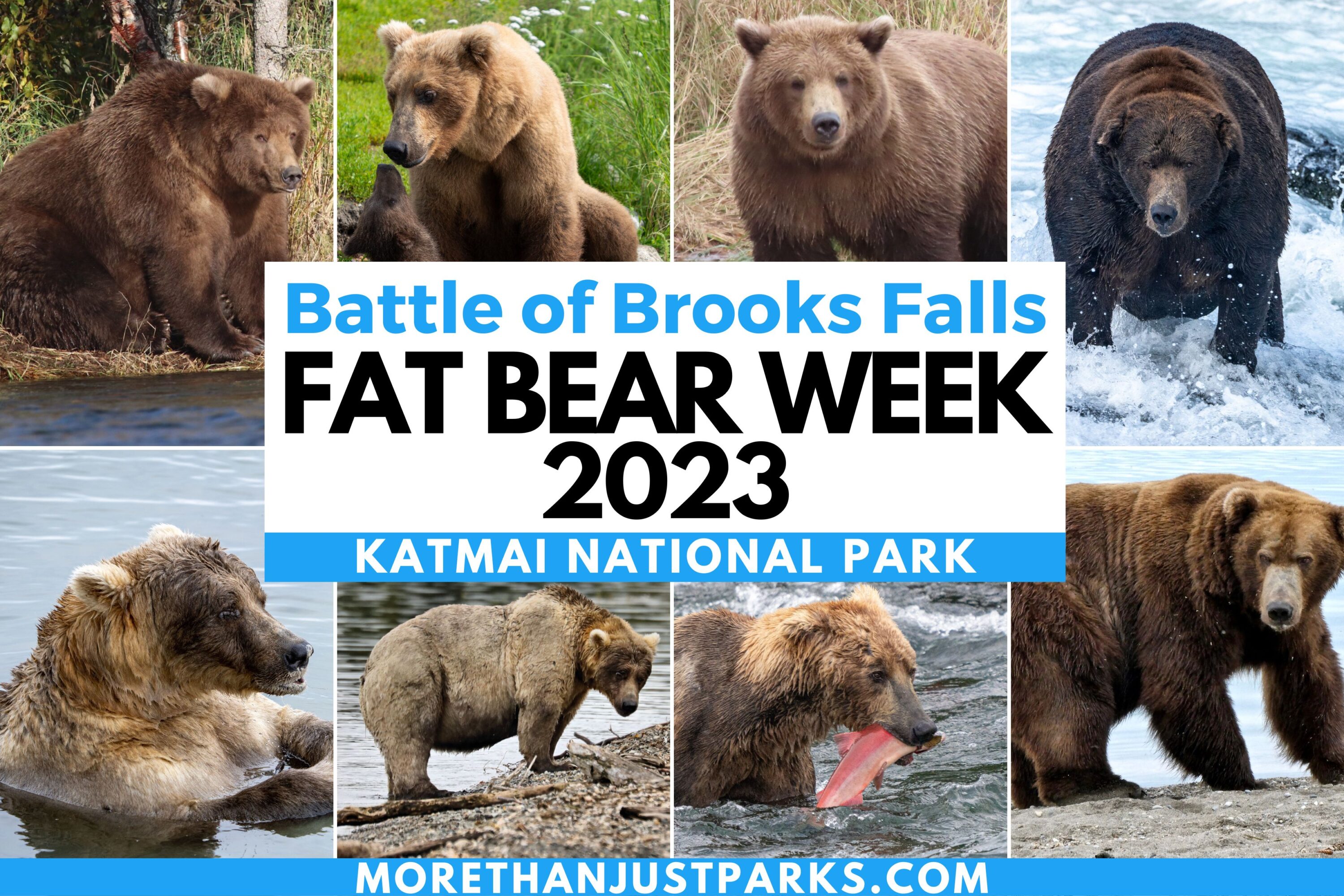
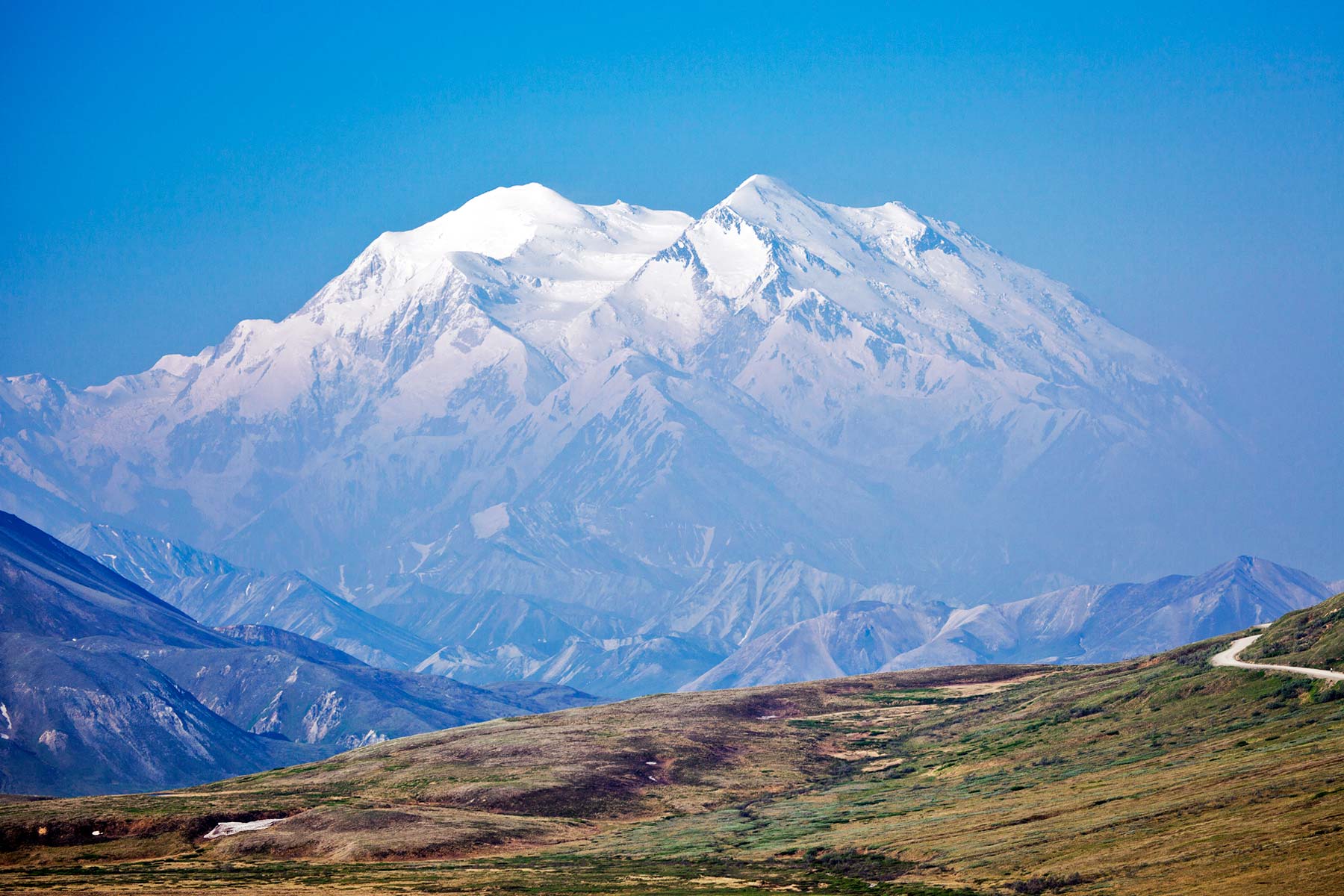


Leave a Reply